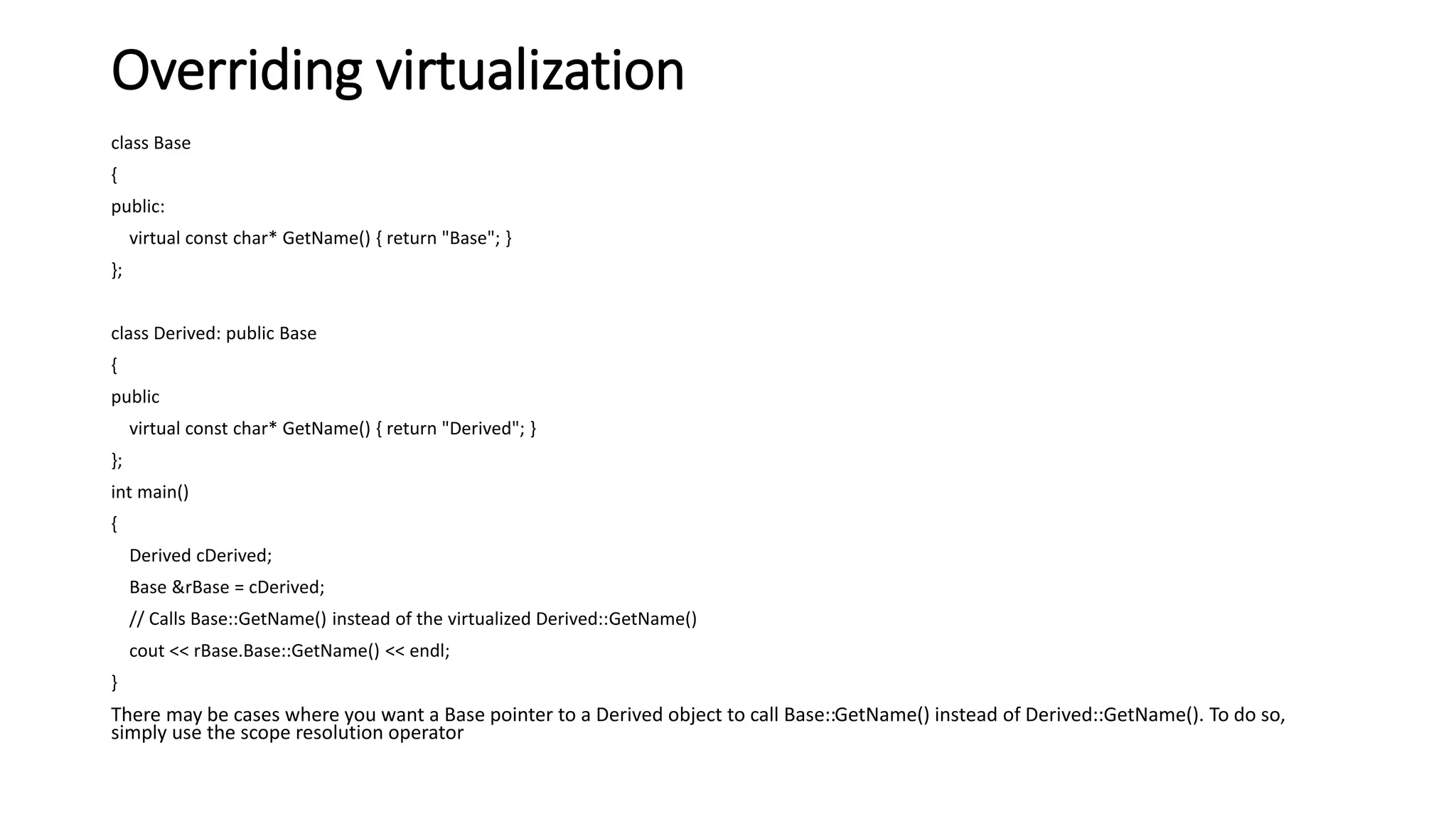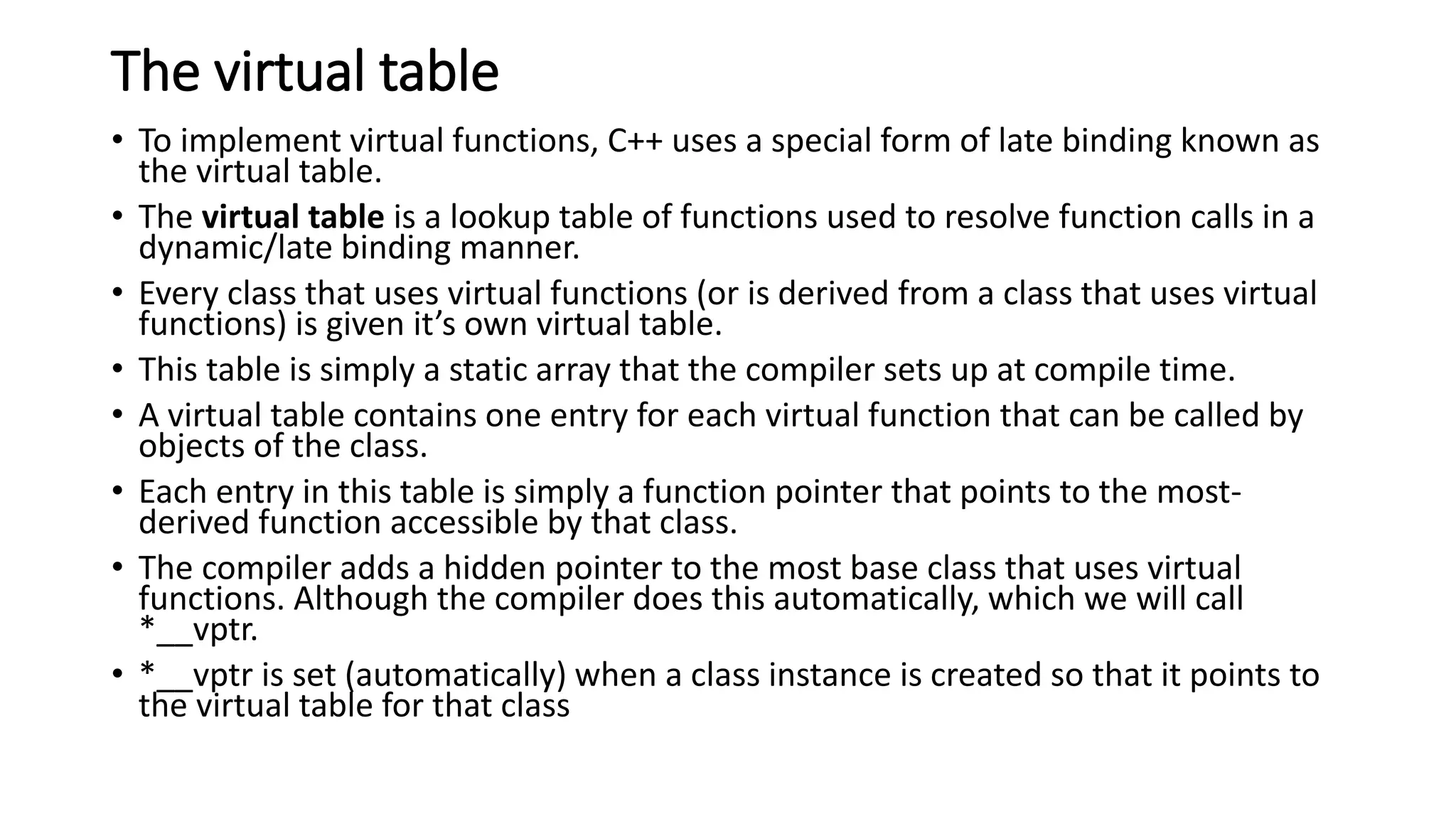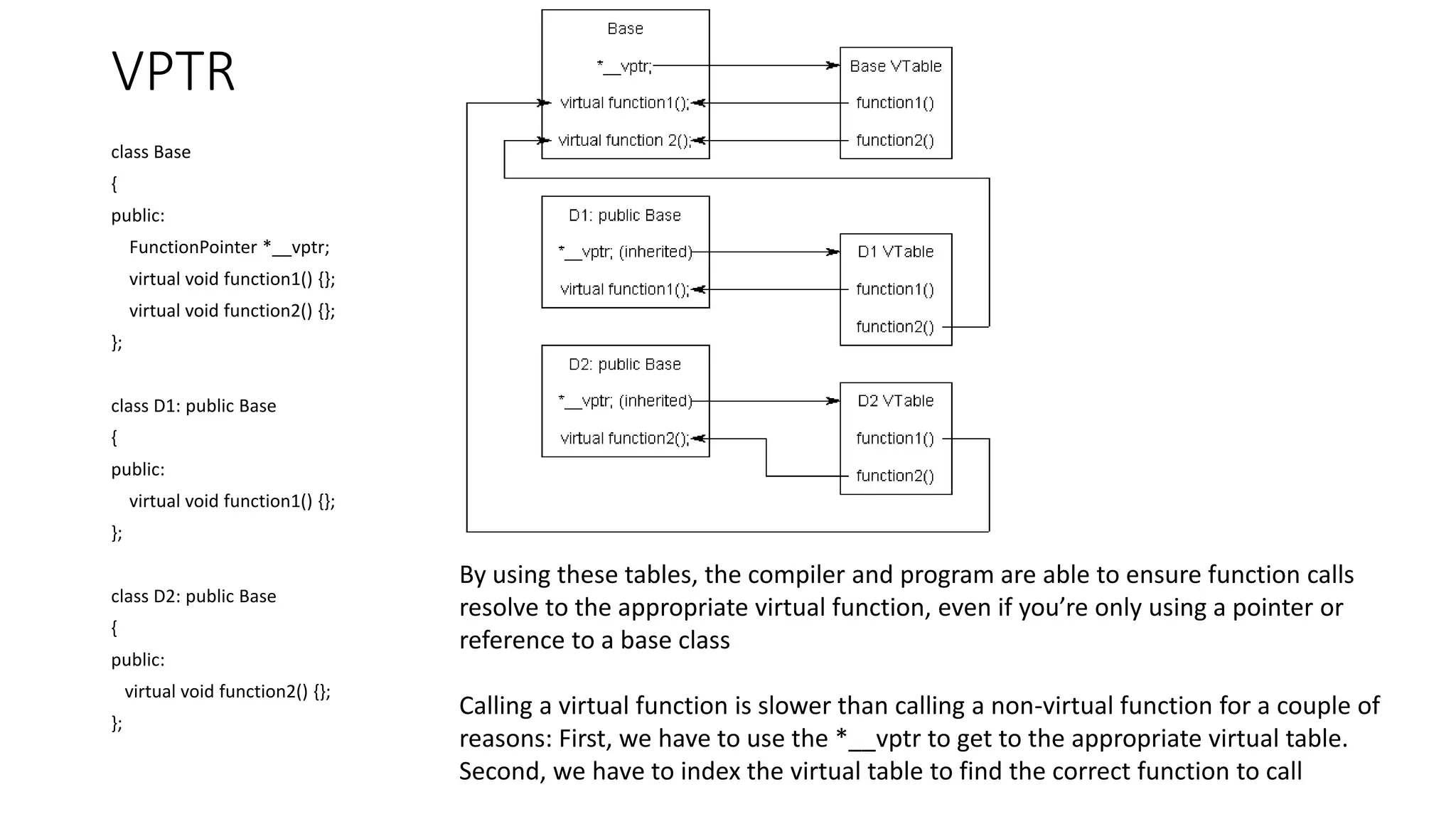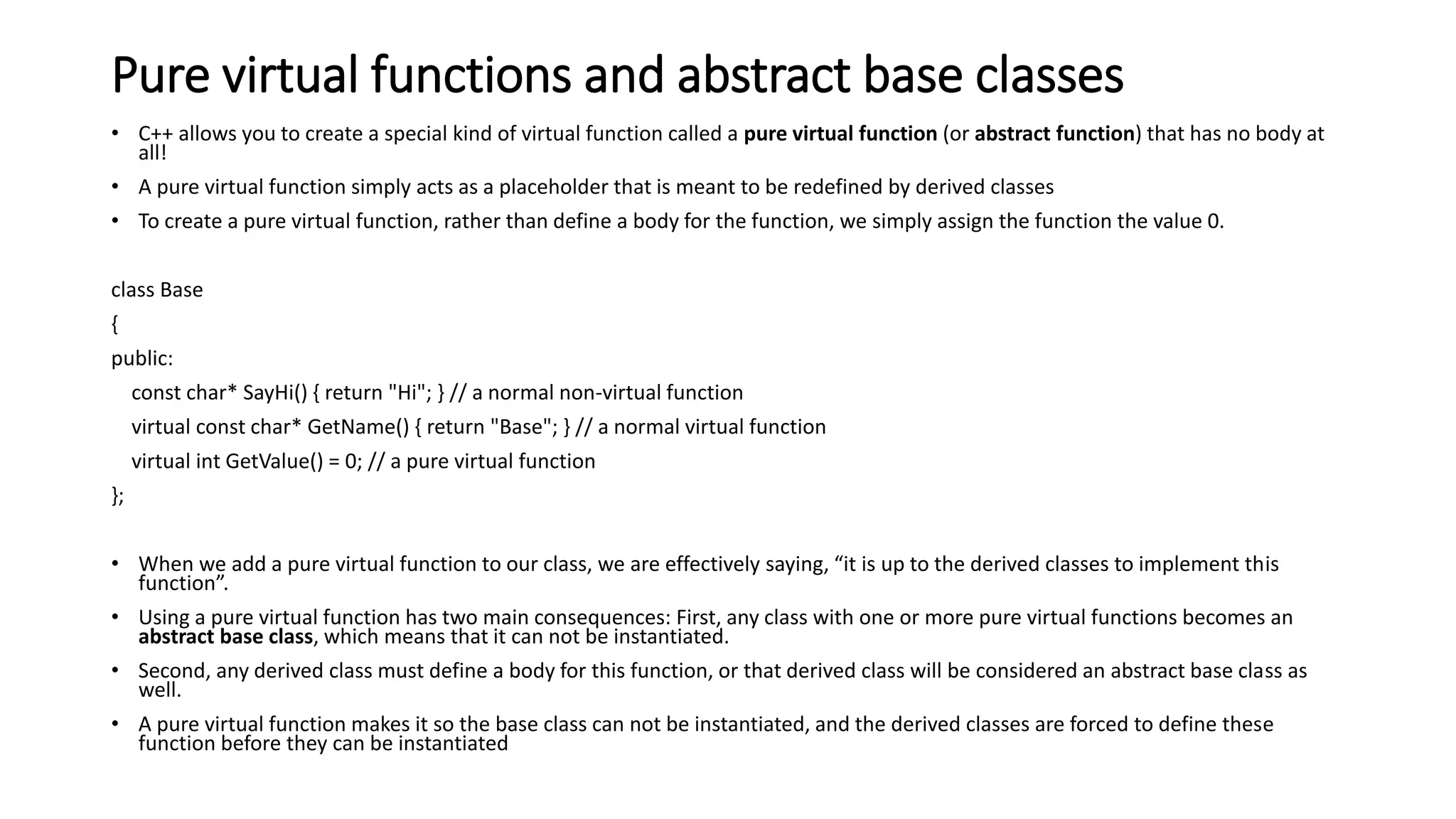The document provides information on various C++ concepts related to object oriented programming including:
- Data encapsulation and abstraction which involve wrapping data and functions together into classes and hiding implementation details.
- Inheritance which allows classes to inherit attributes and behaviors from other classes to promote code reuse.
- Polymorphism which allows classes to have different implementations of the same methods.
- Constructors and destructors which are special methods used to initialize and clean up objects.
- Composition and aggregation which describe relationships where a class contains other class objects.
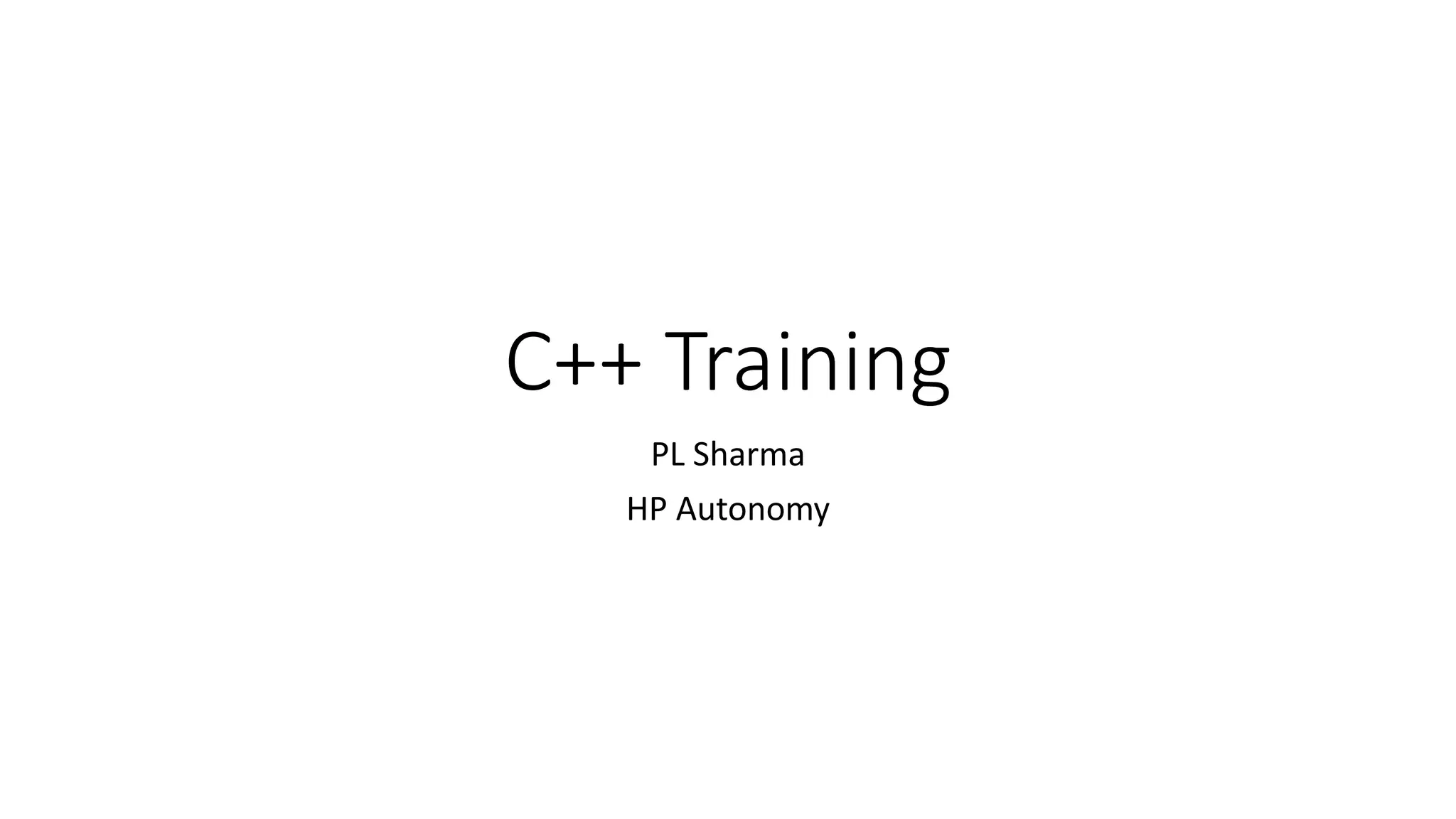

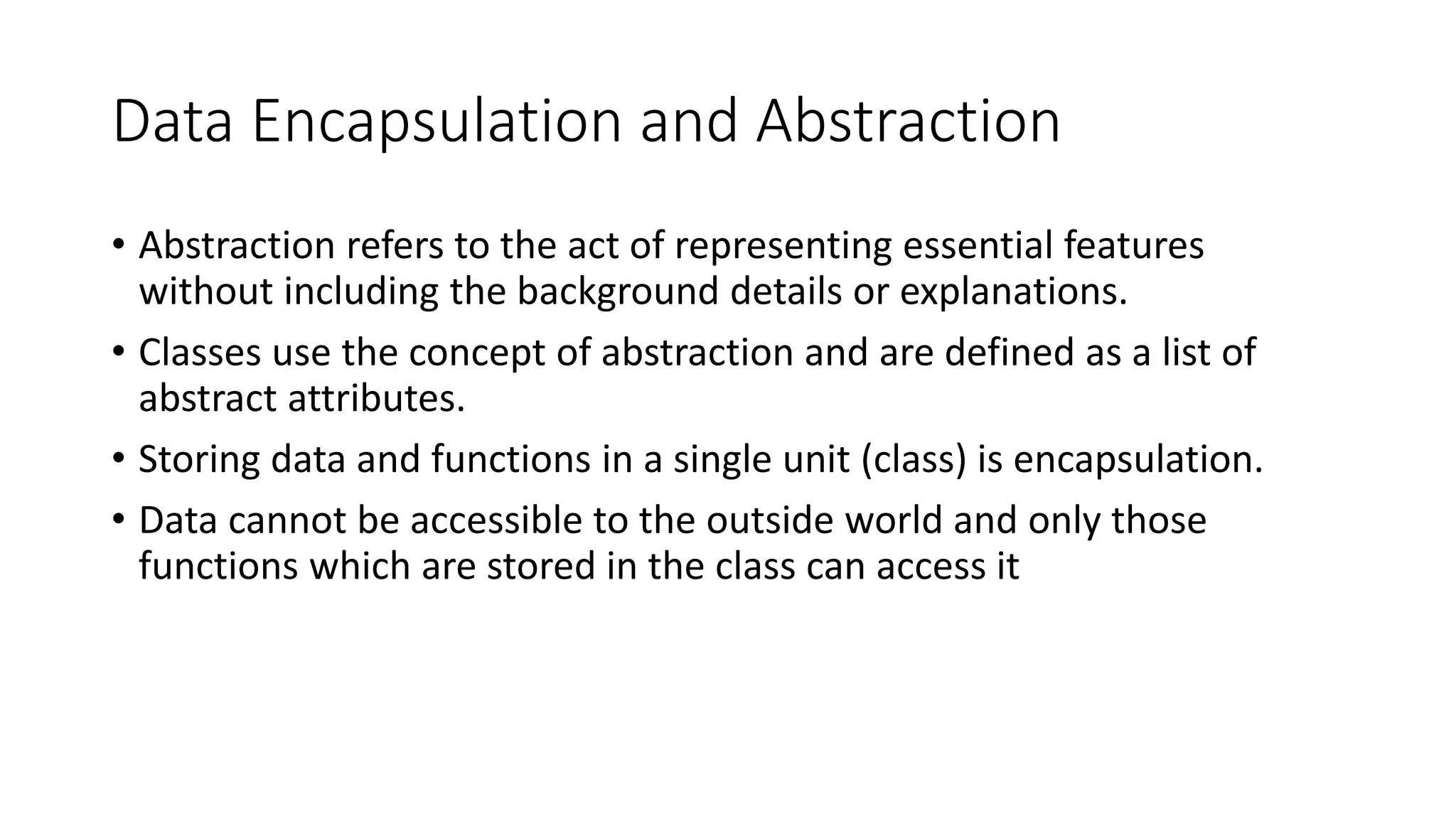
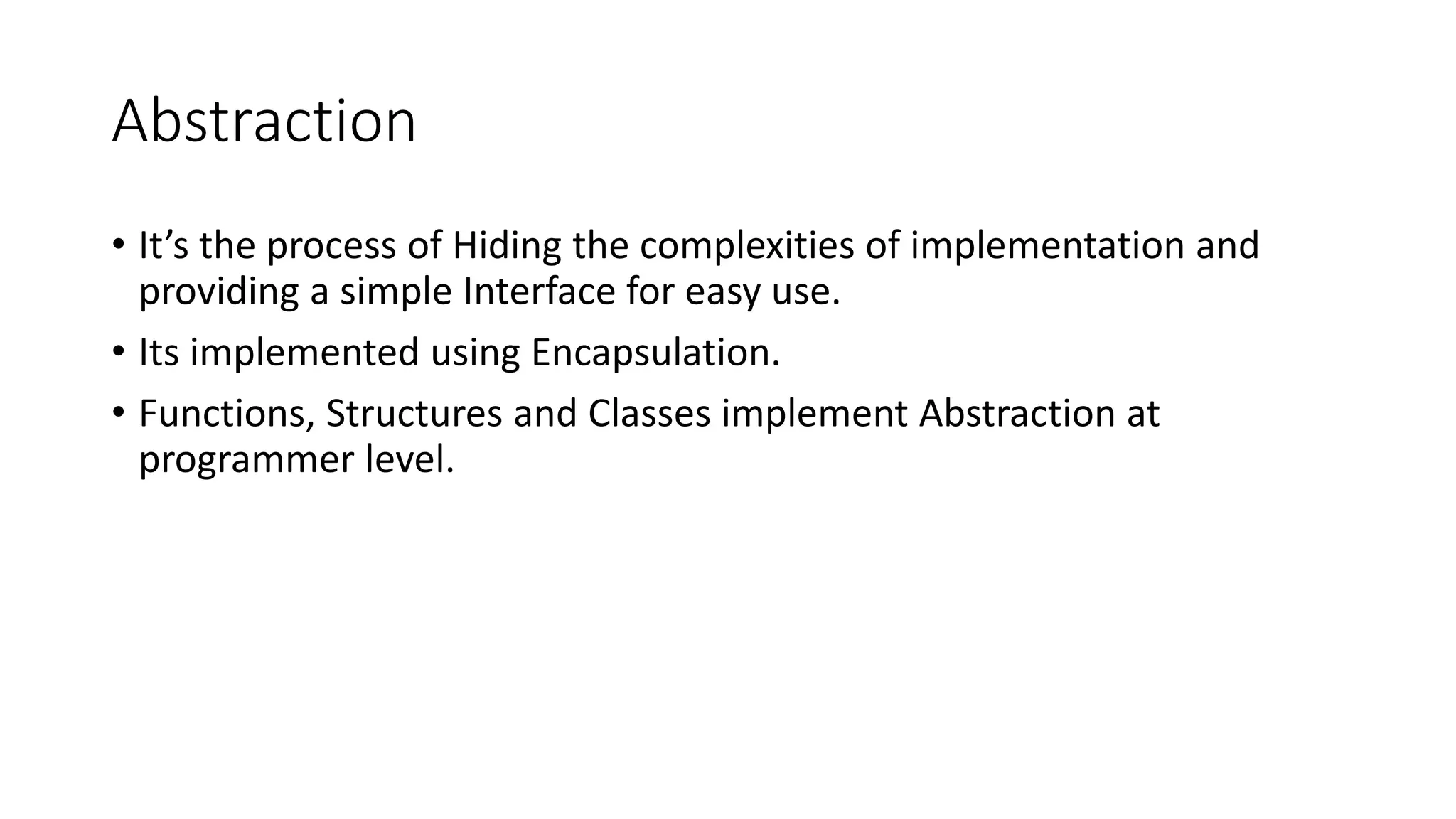
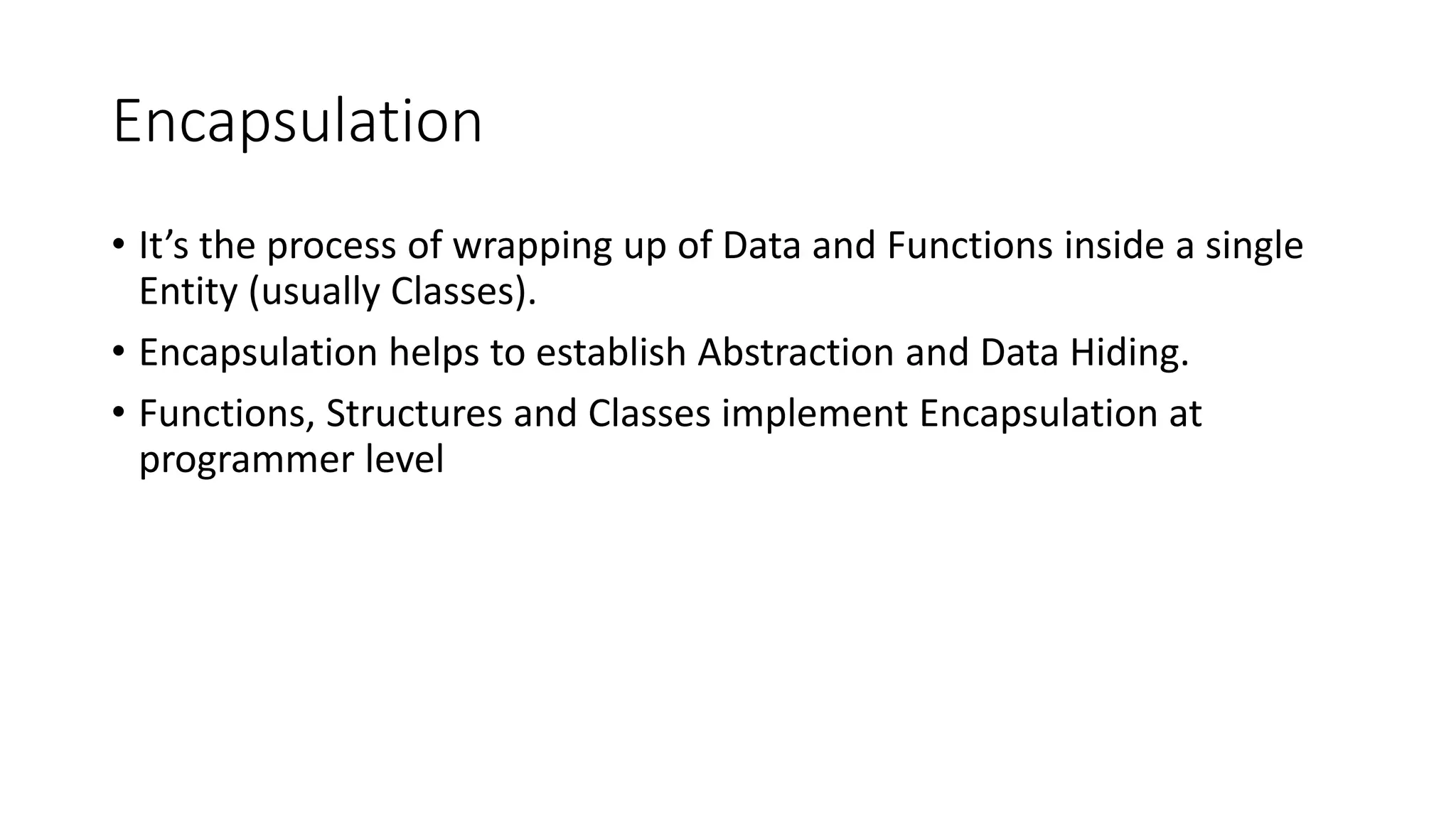
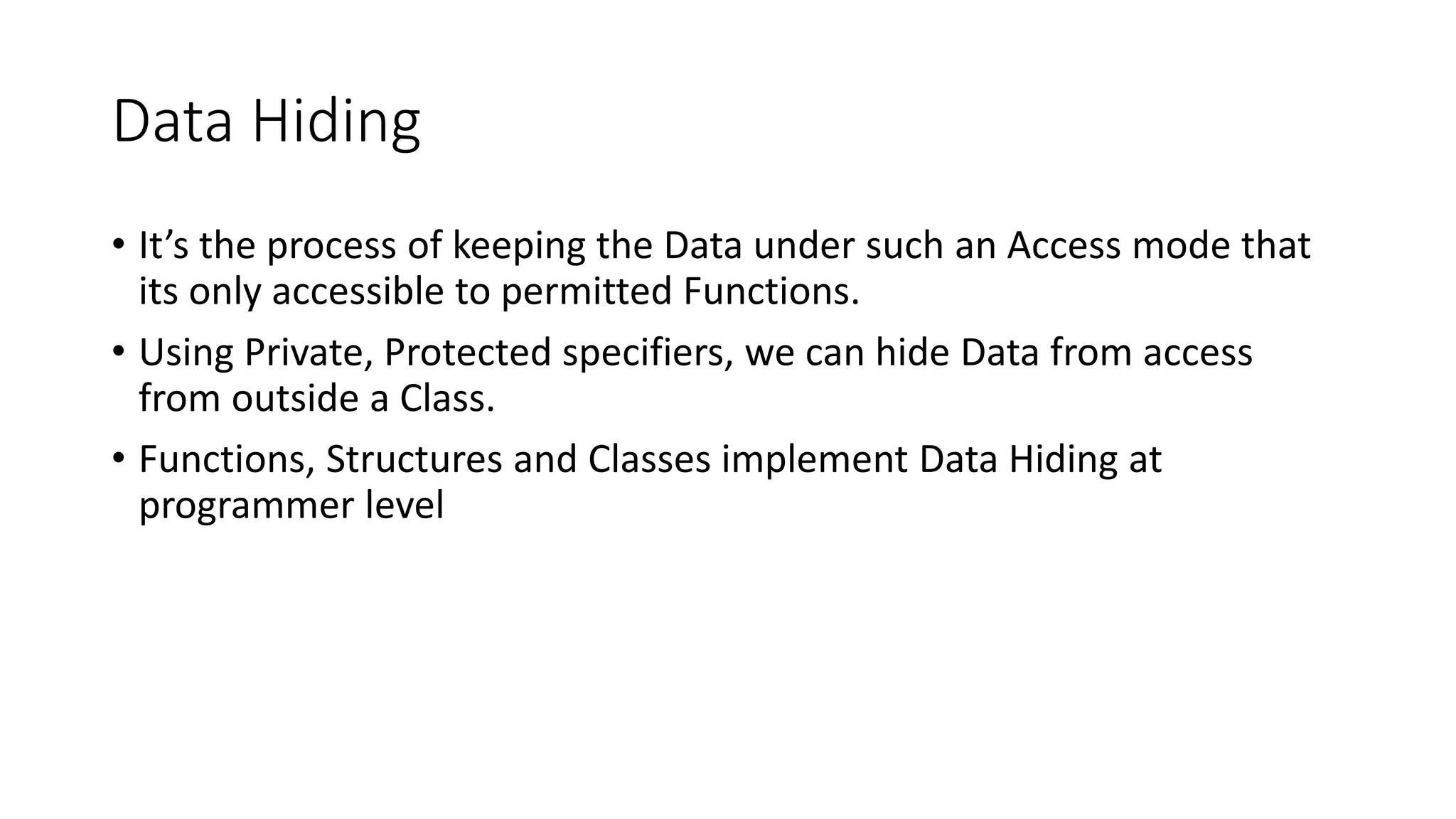
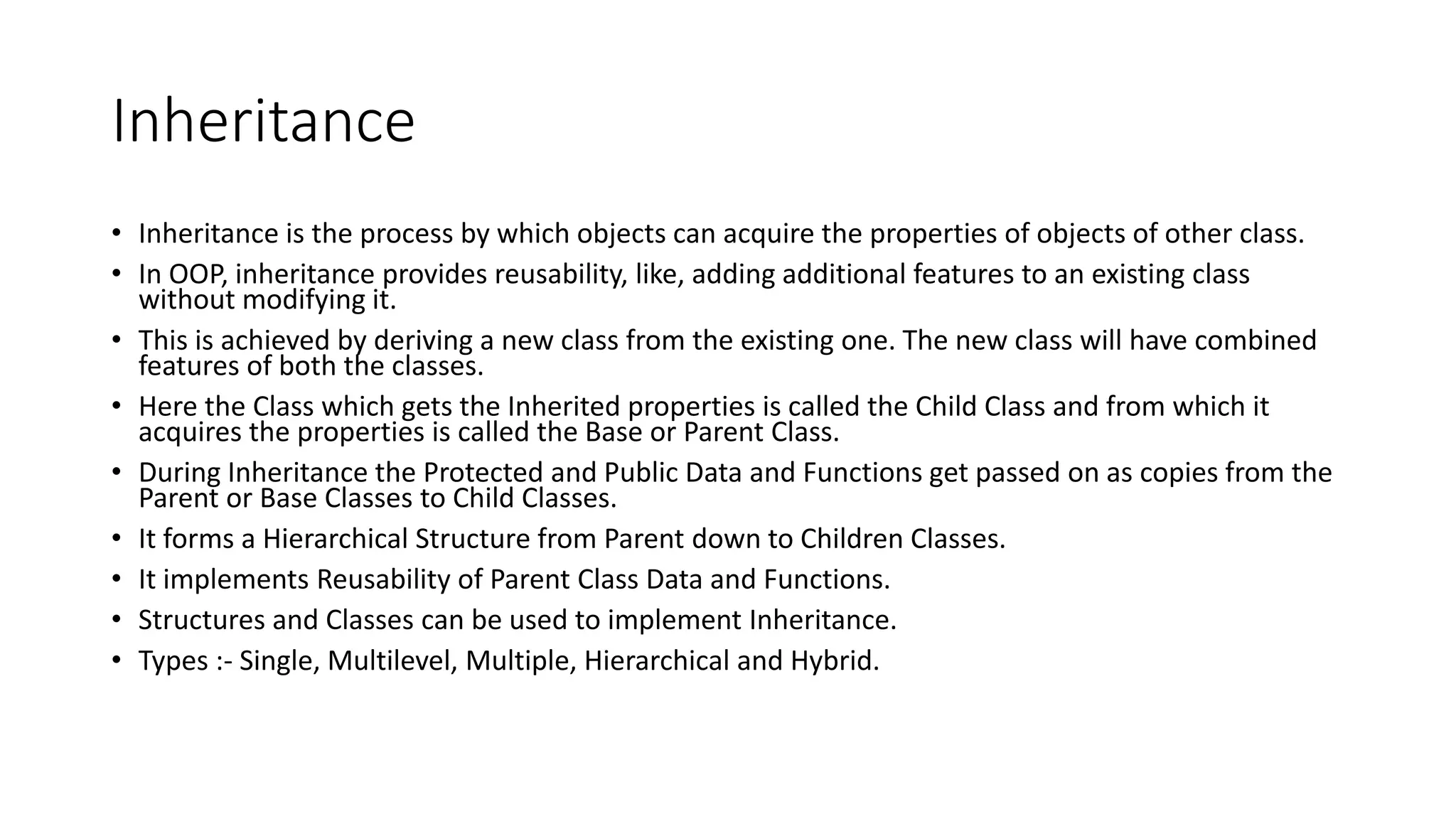
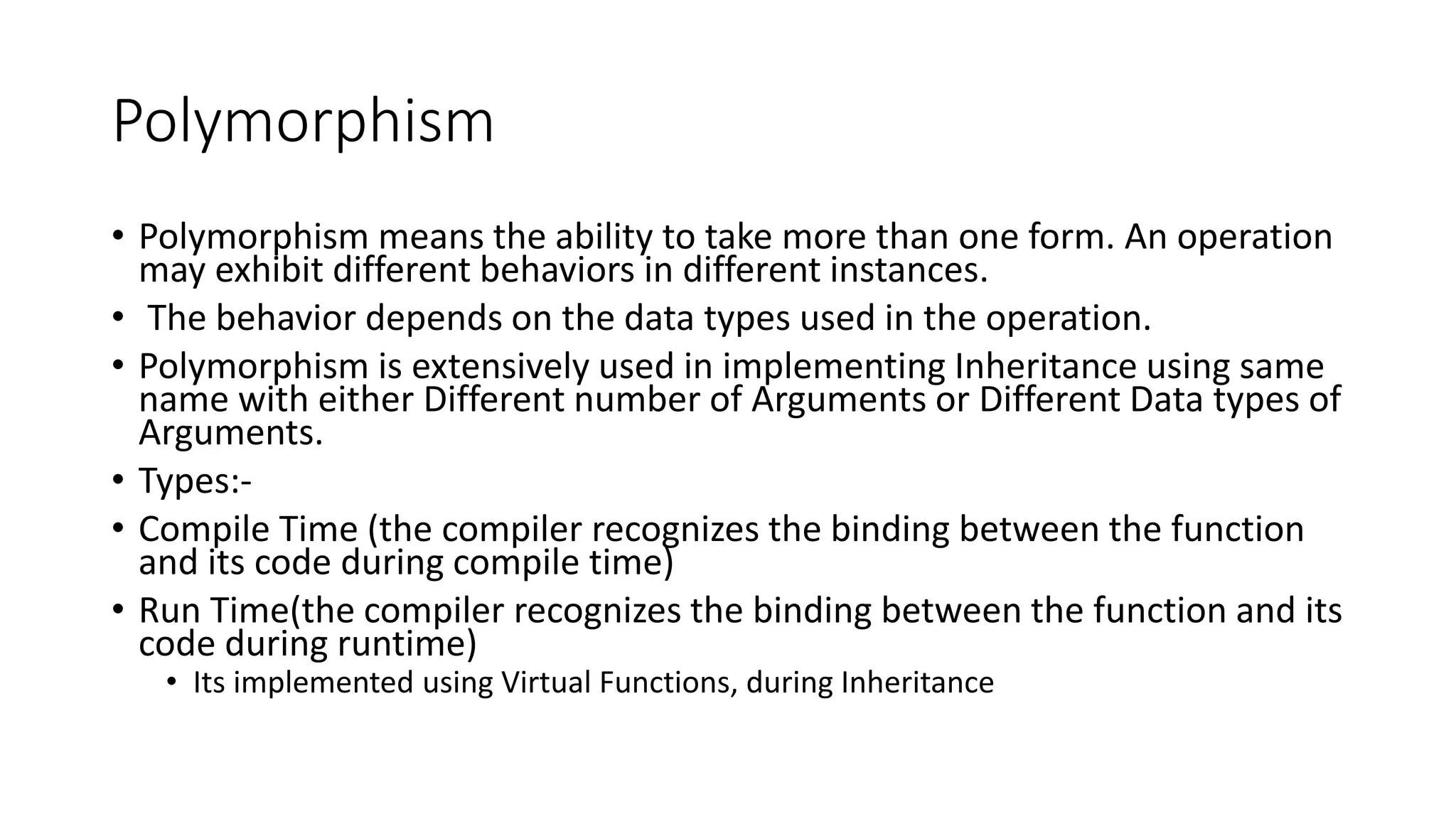
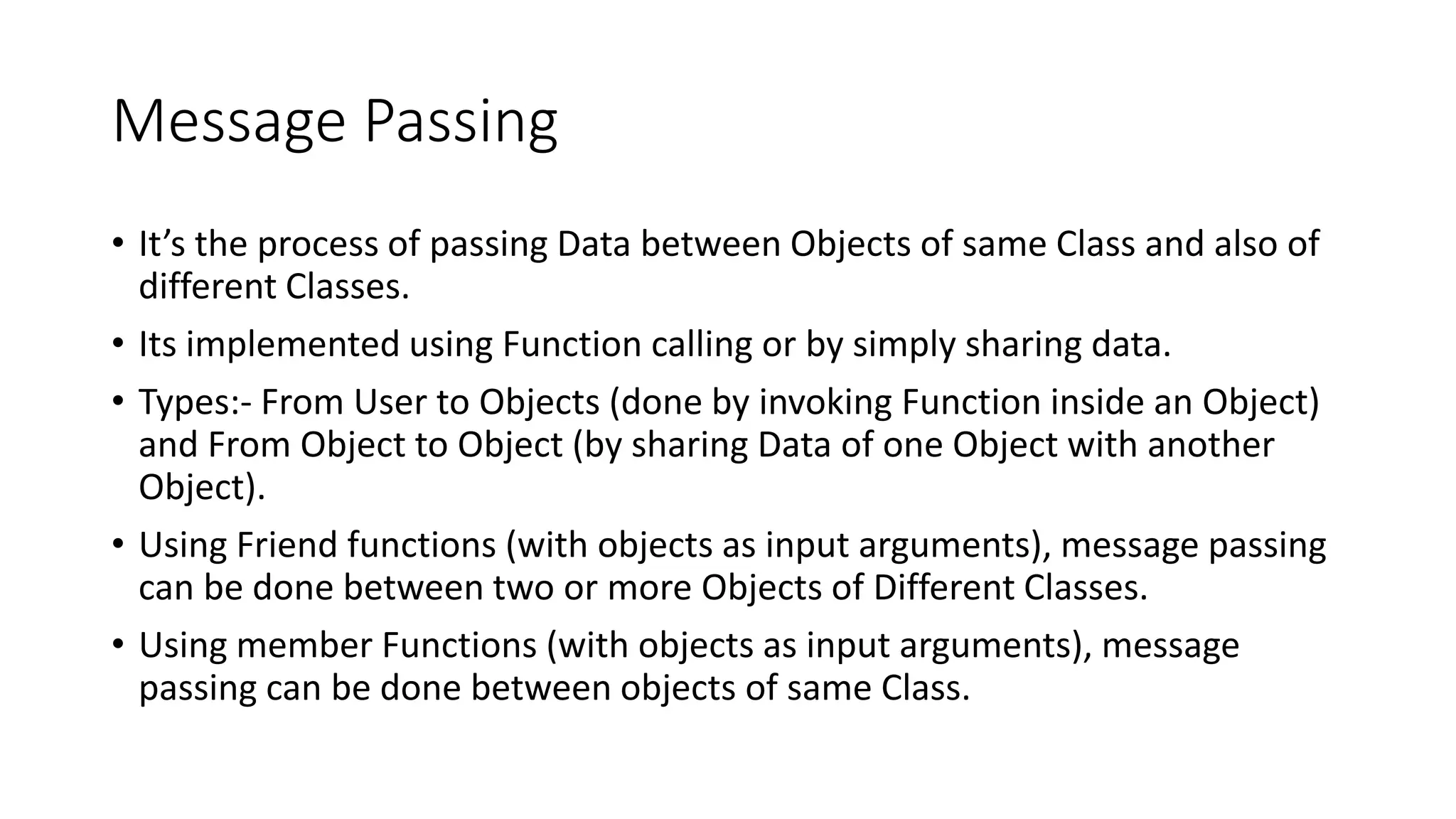
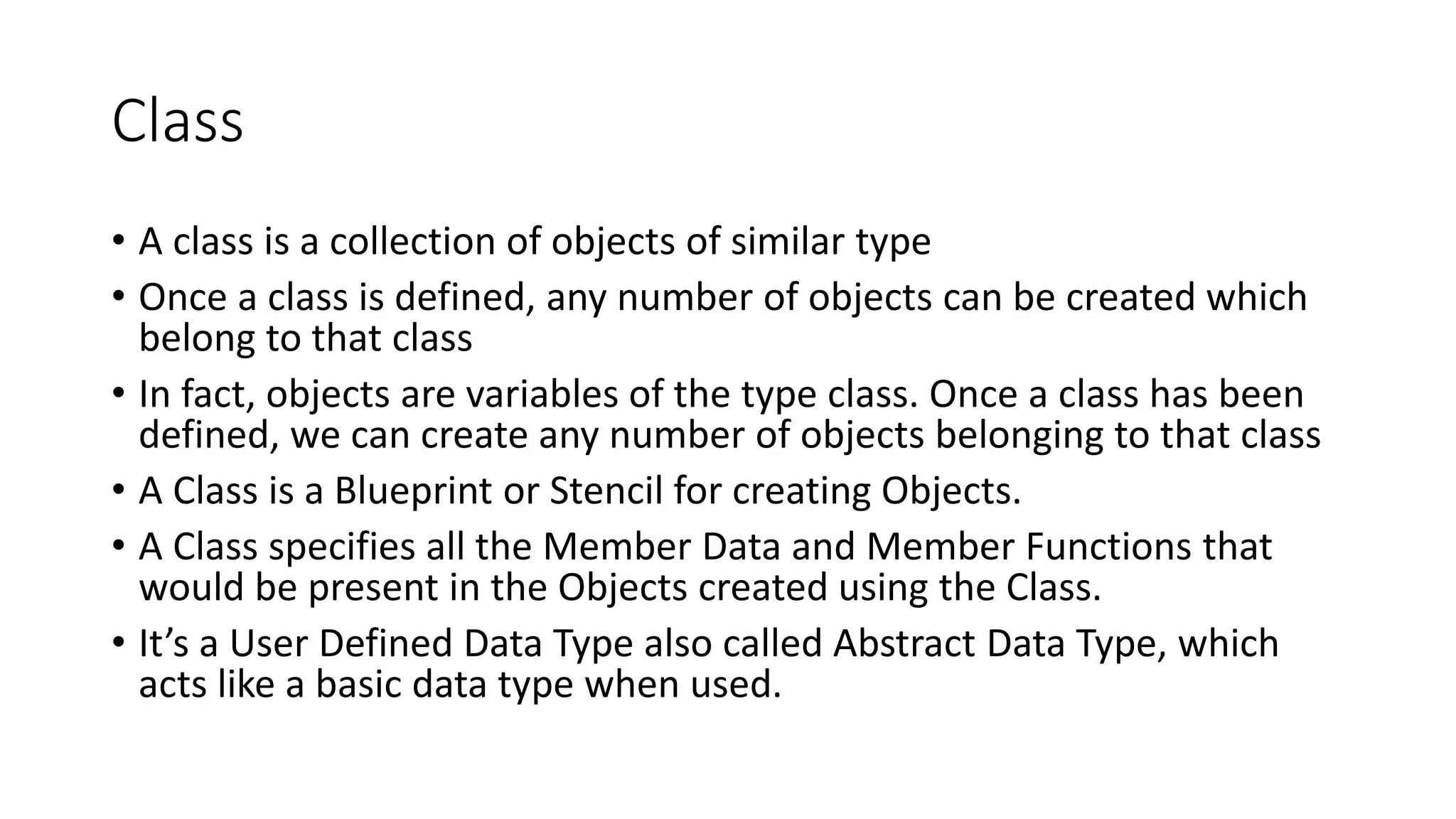
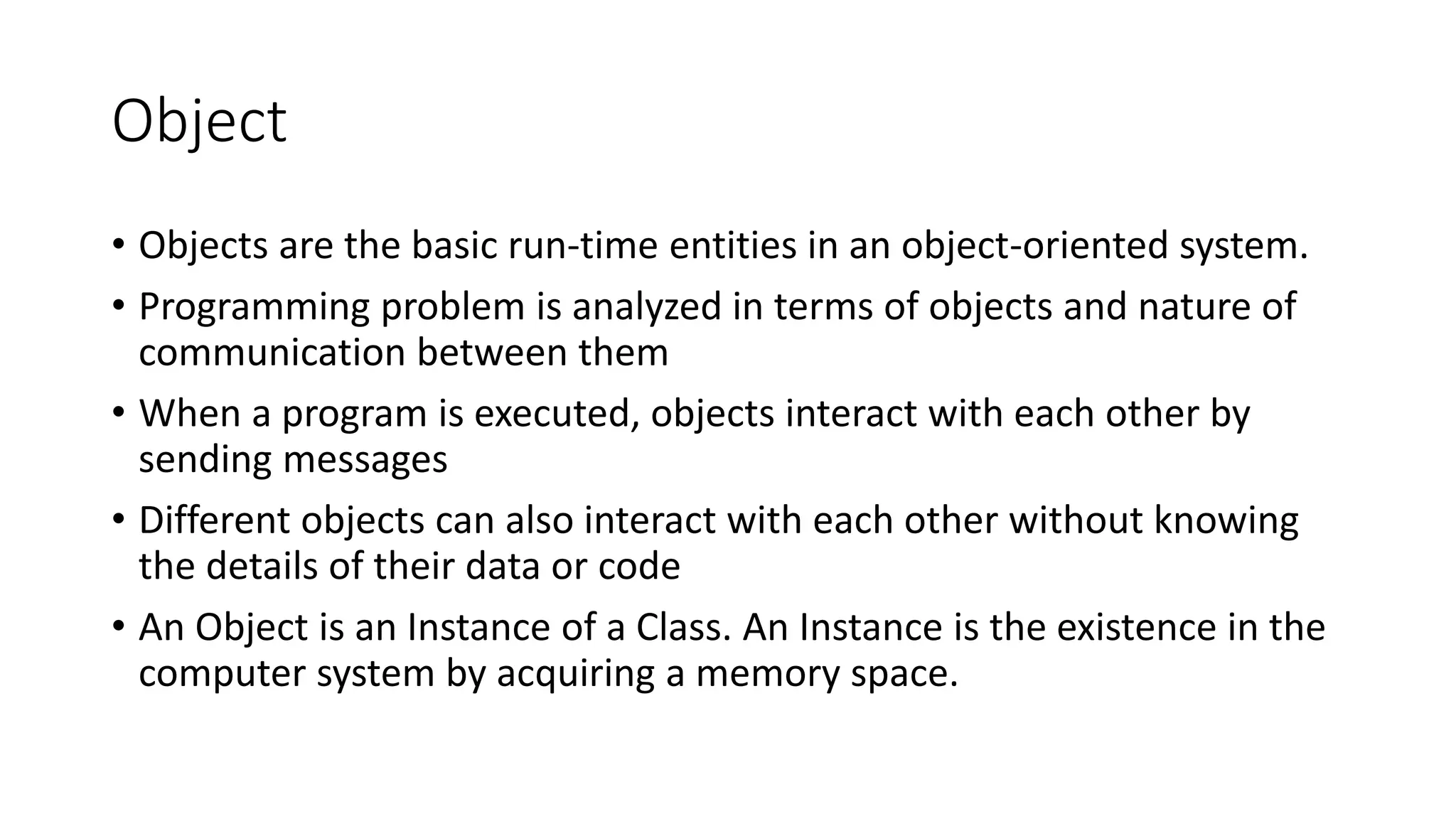
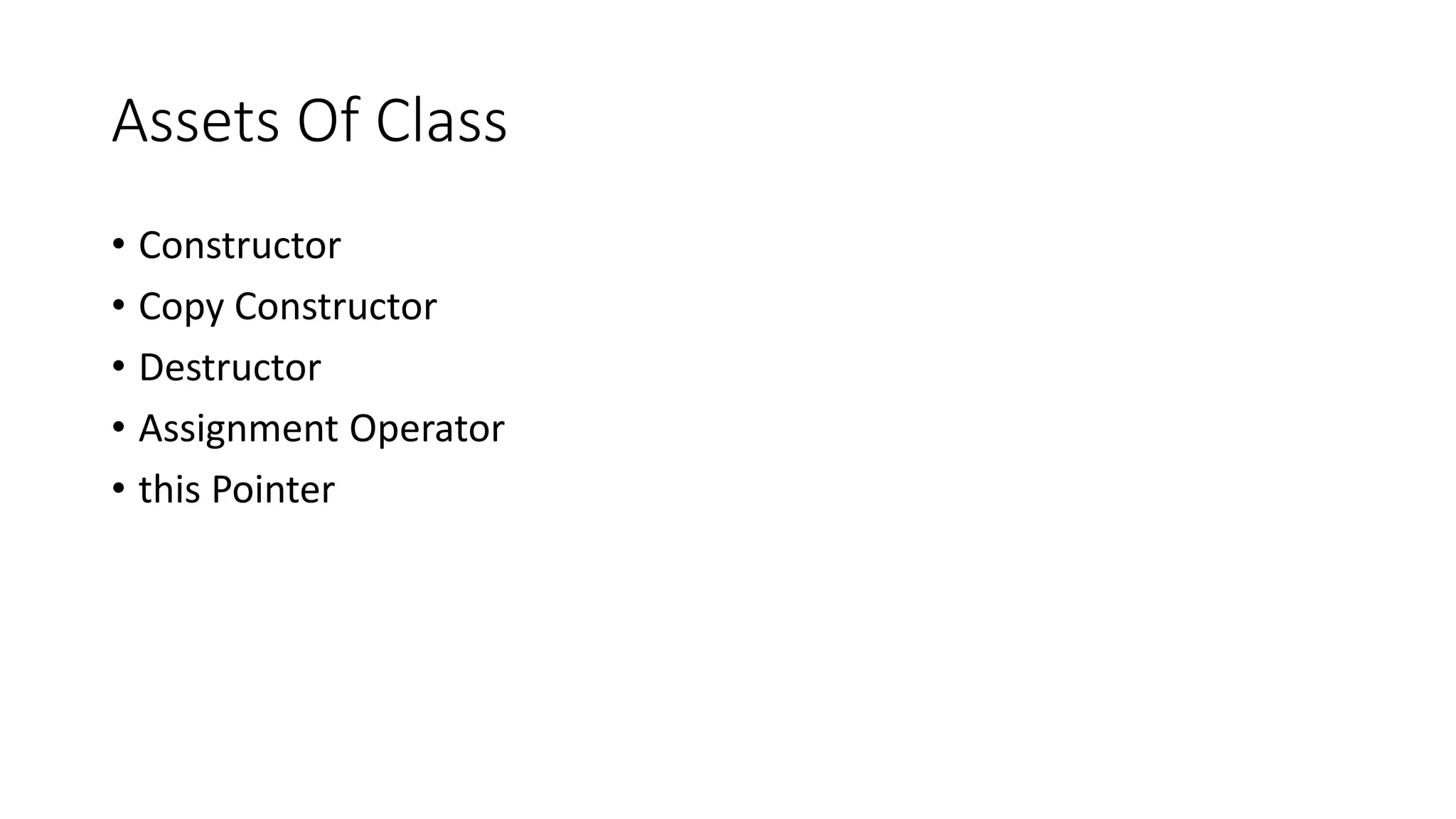
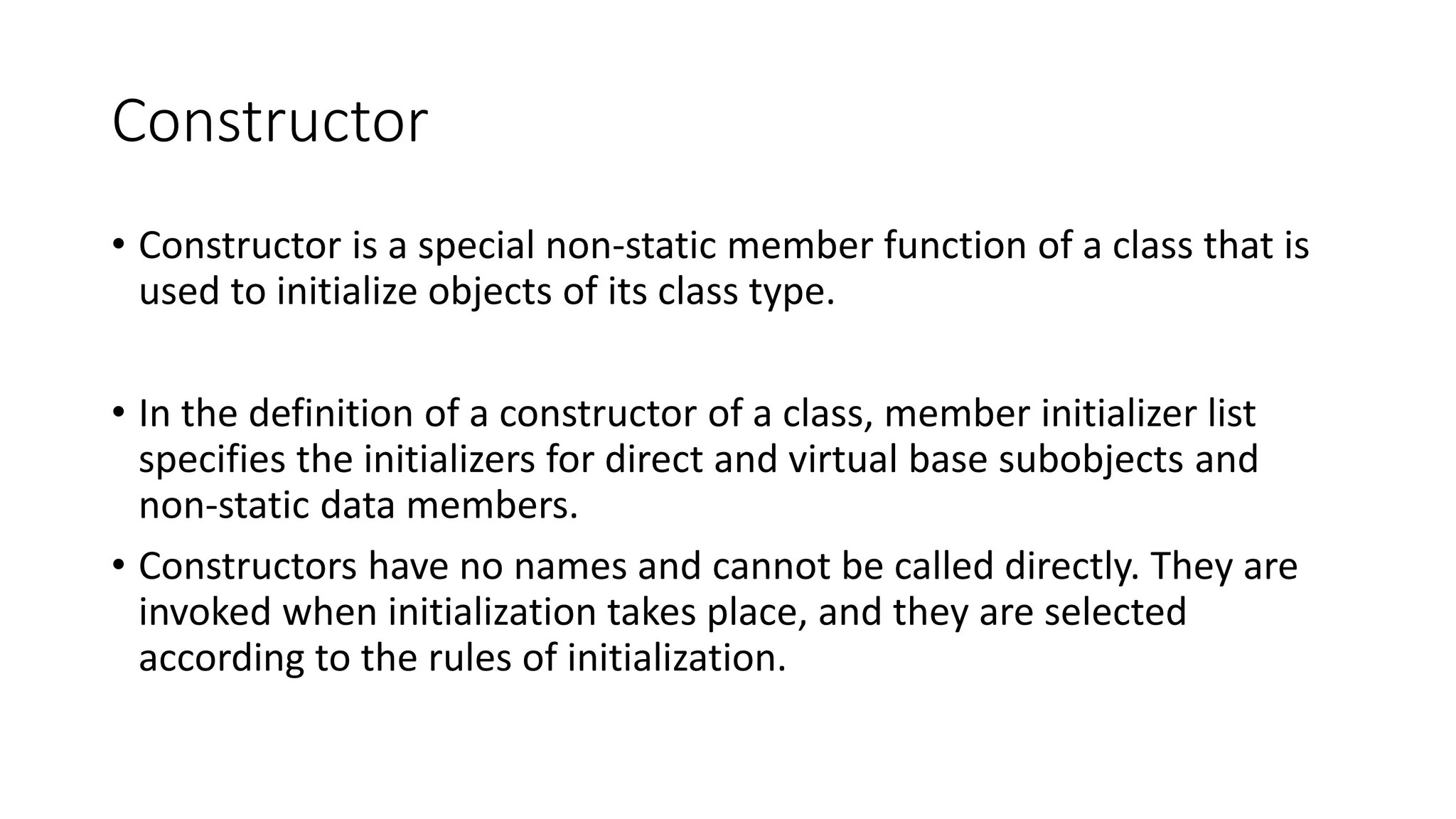
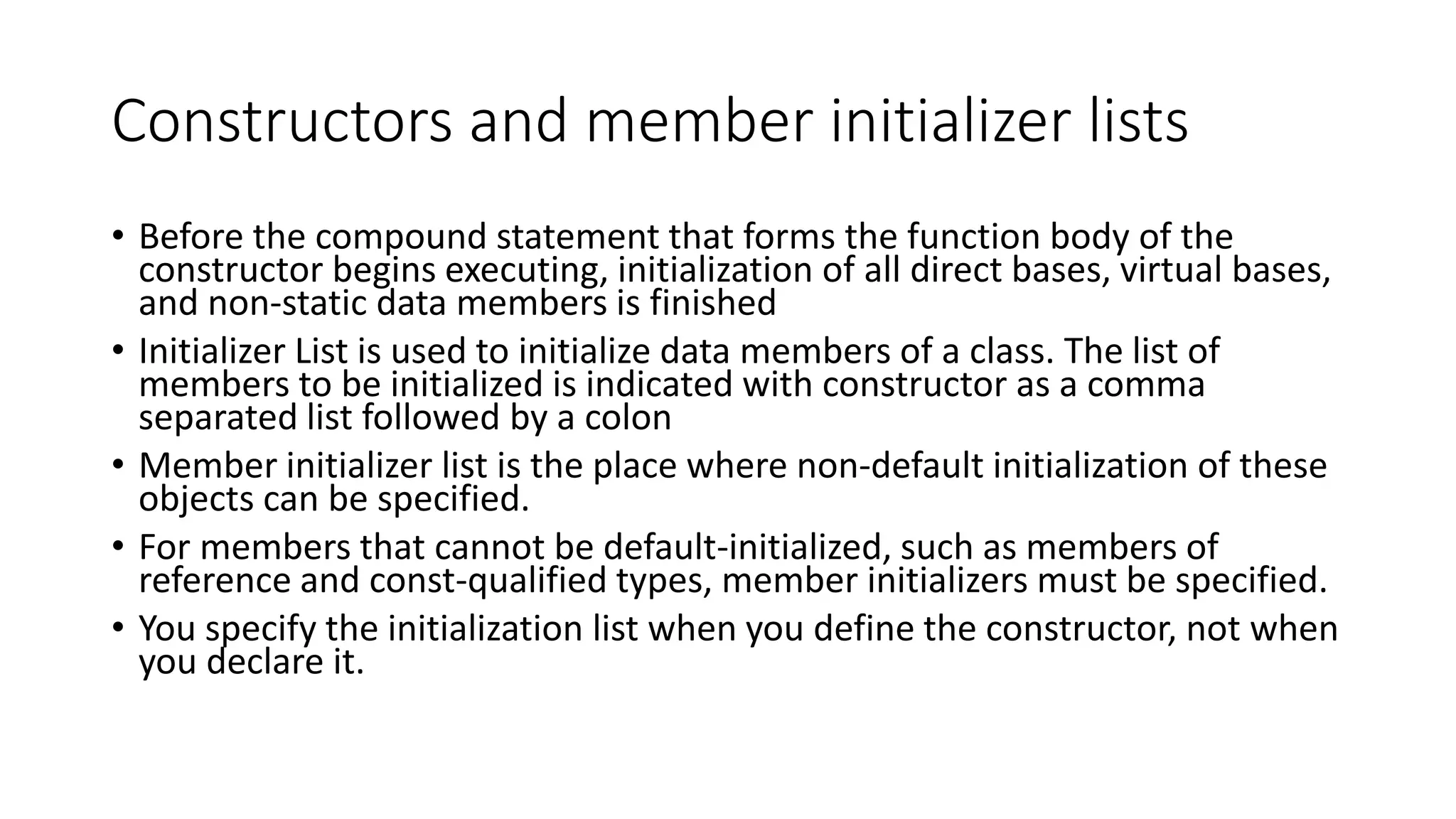
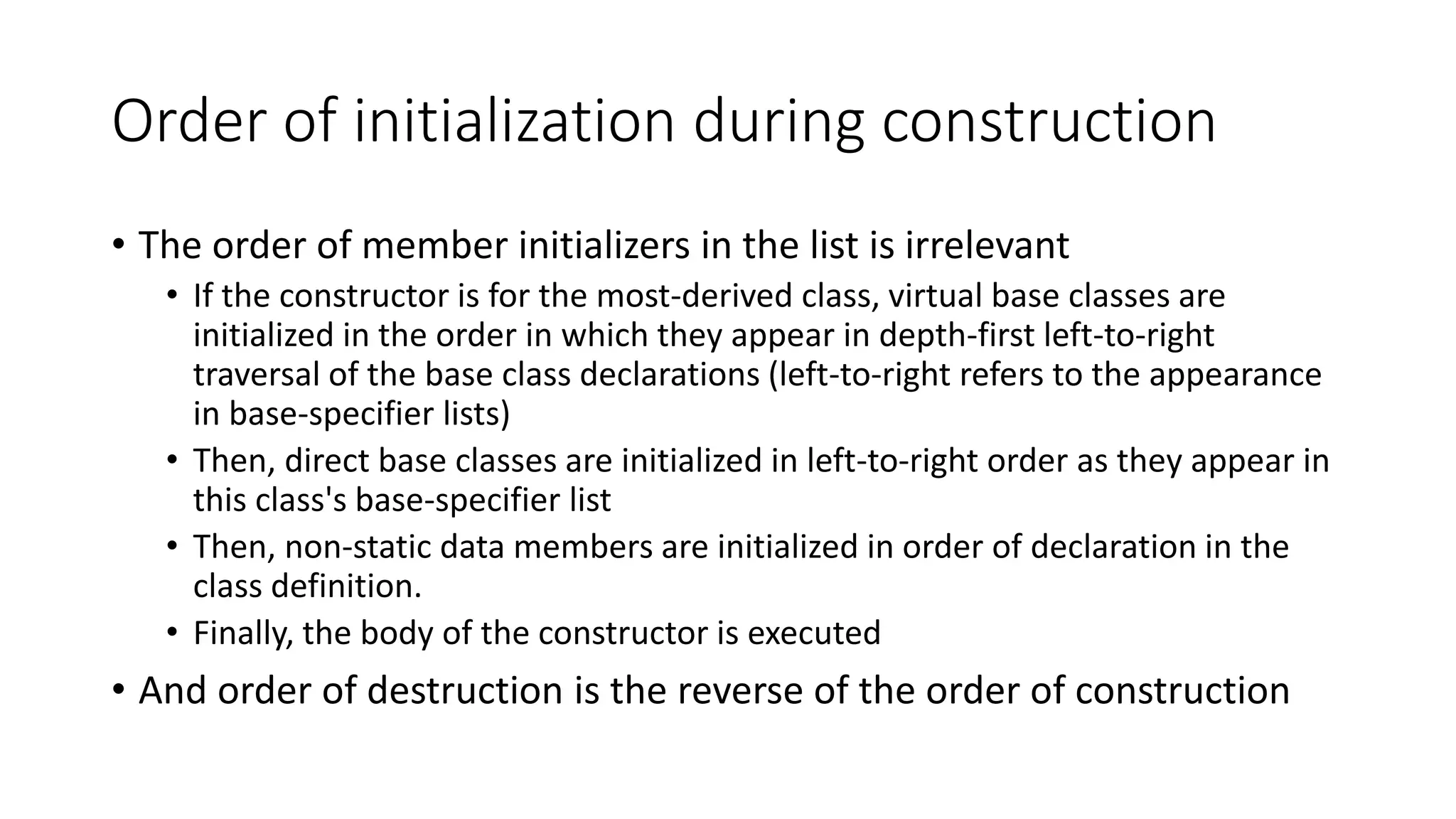
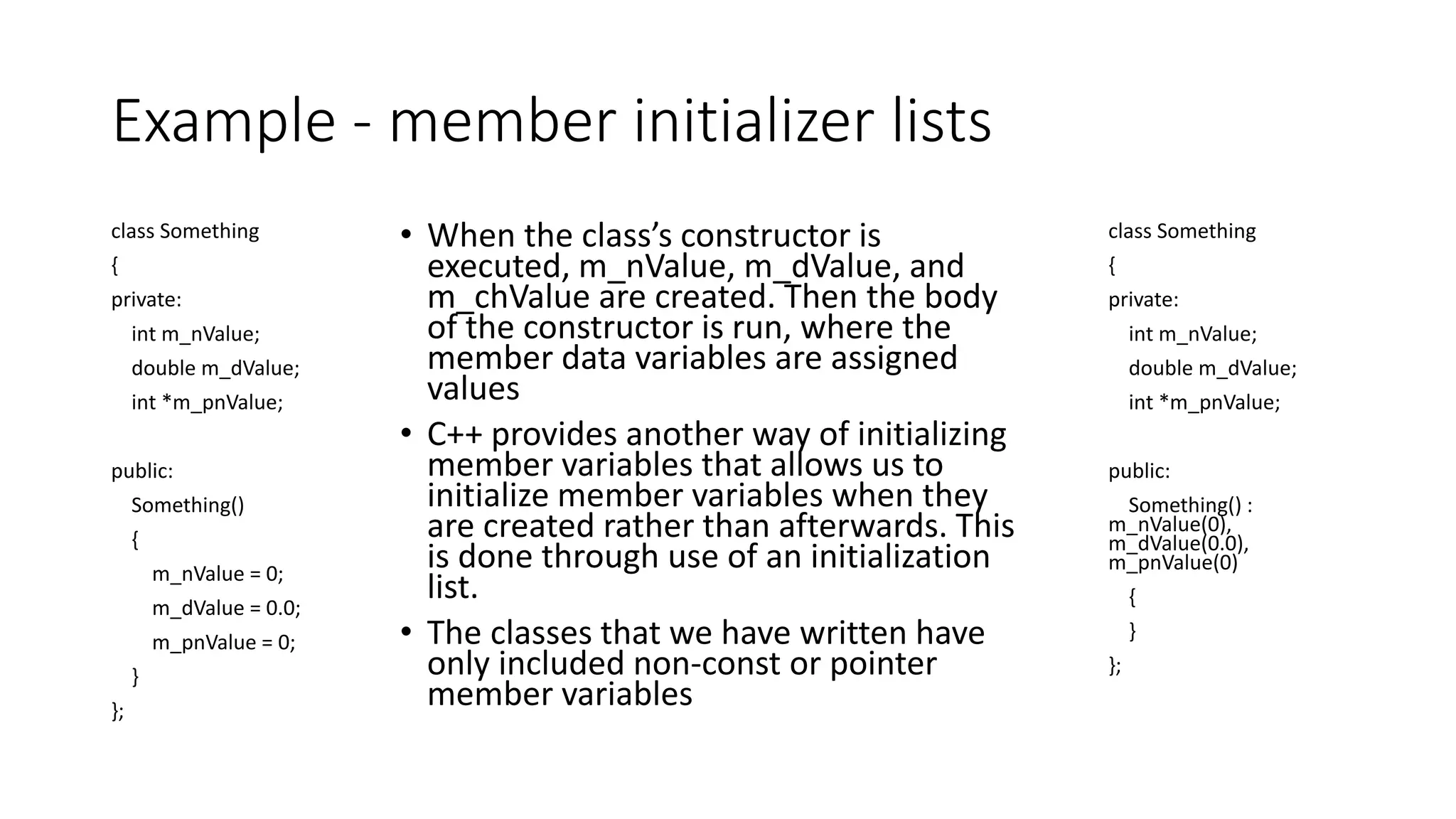

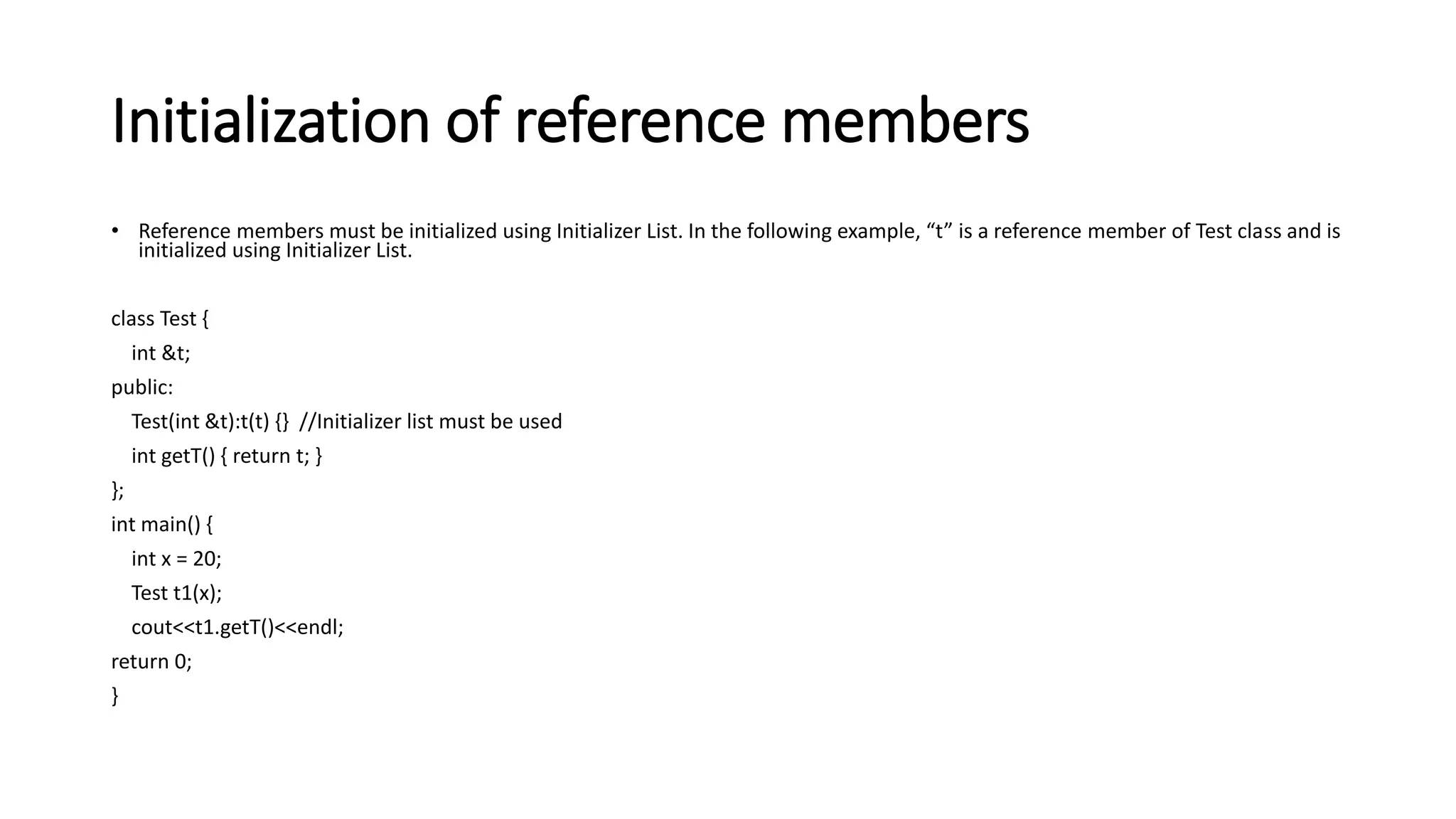
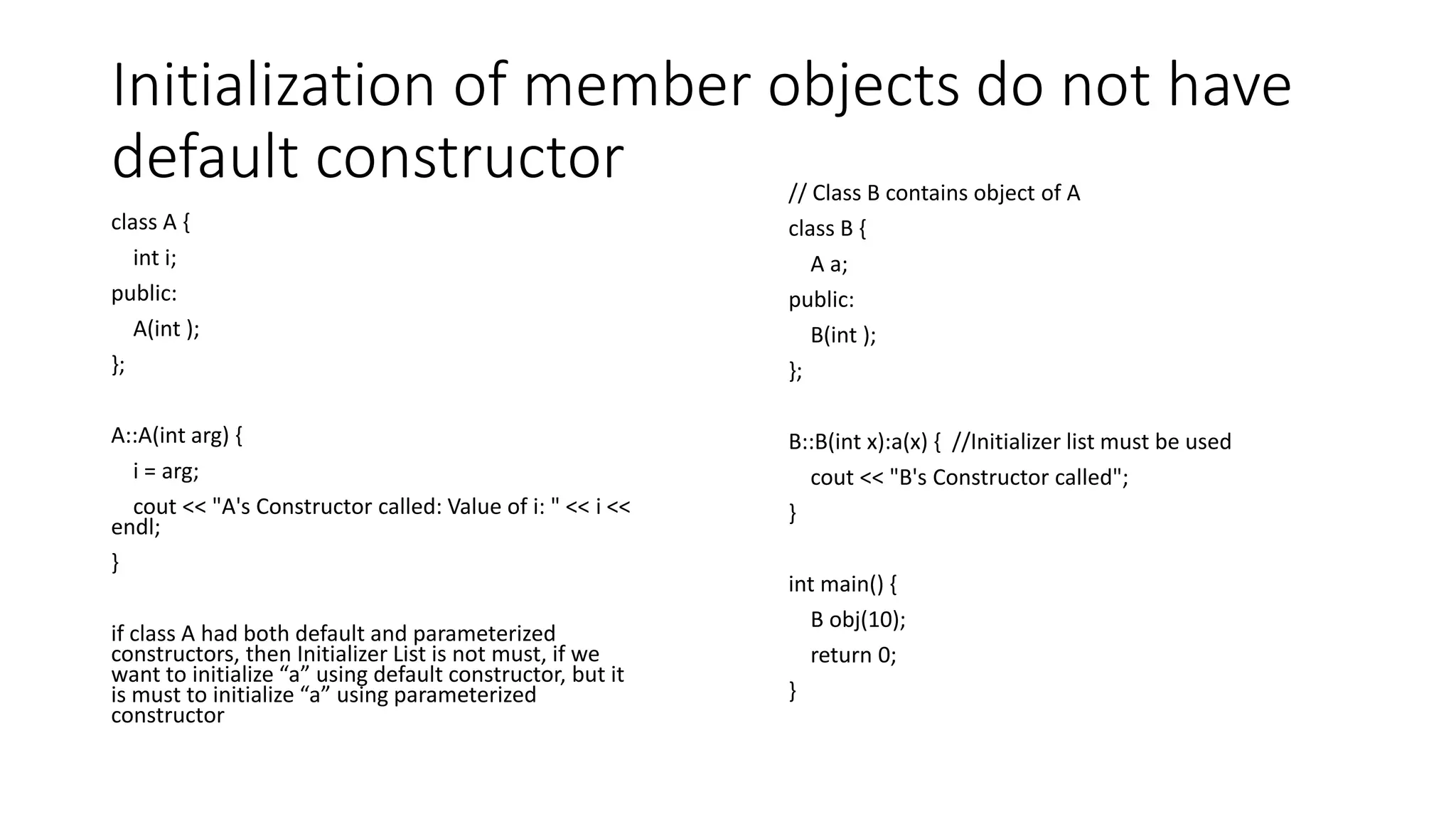
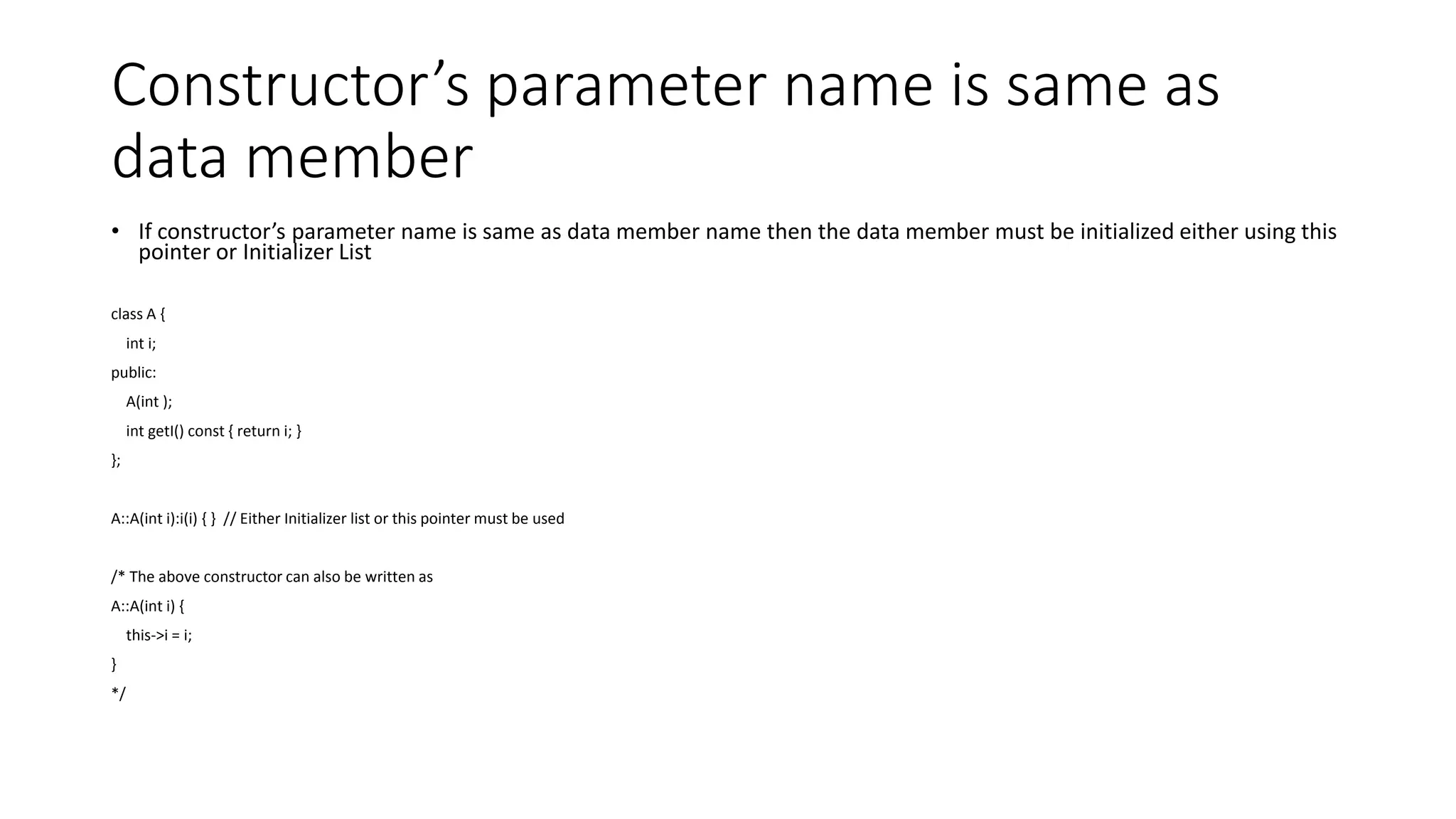
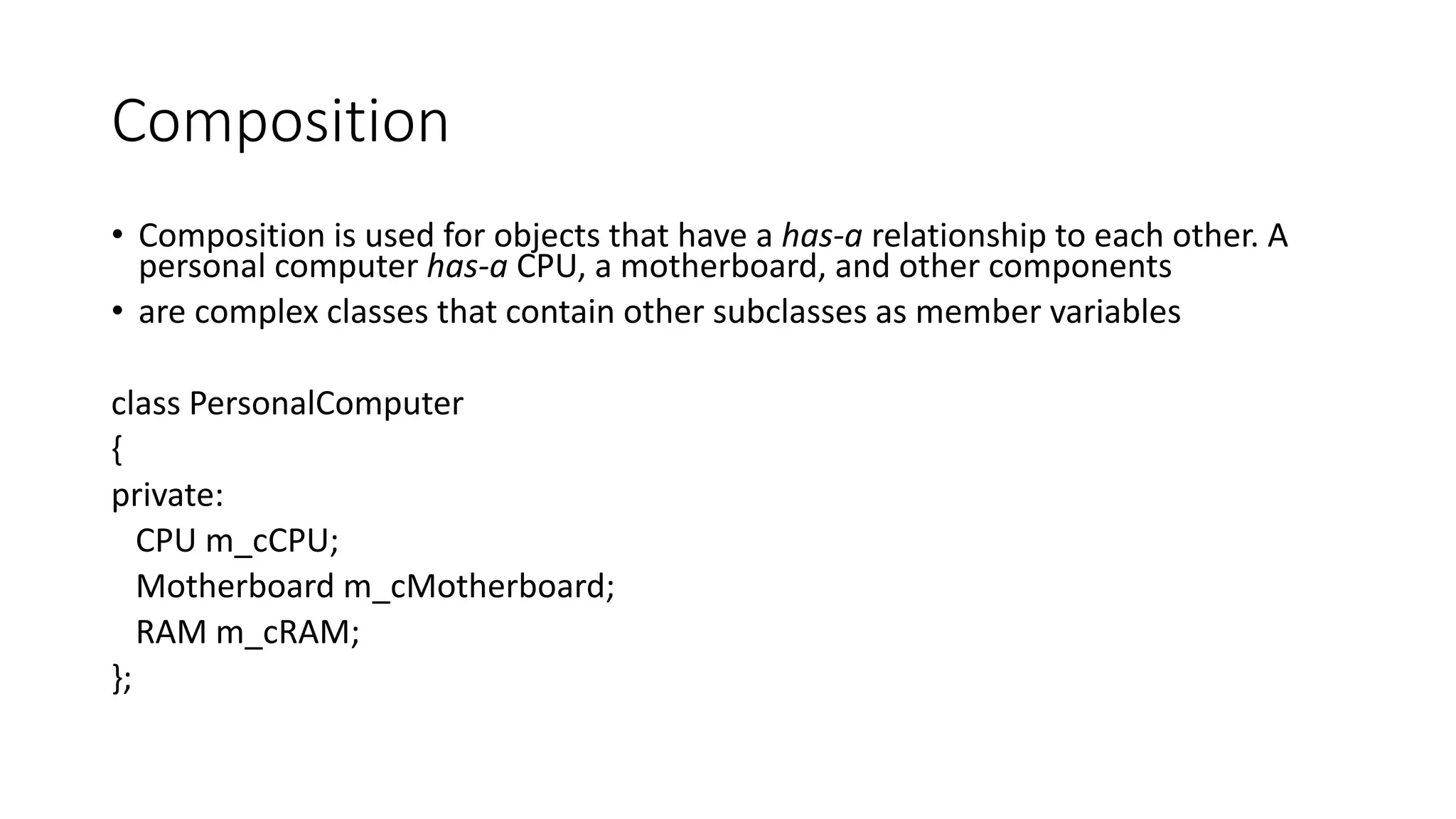
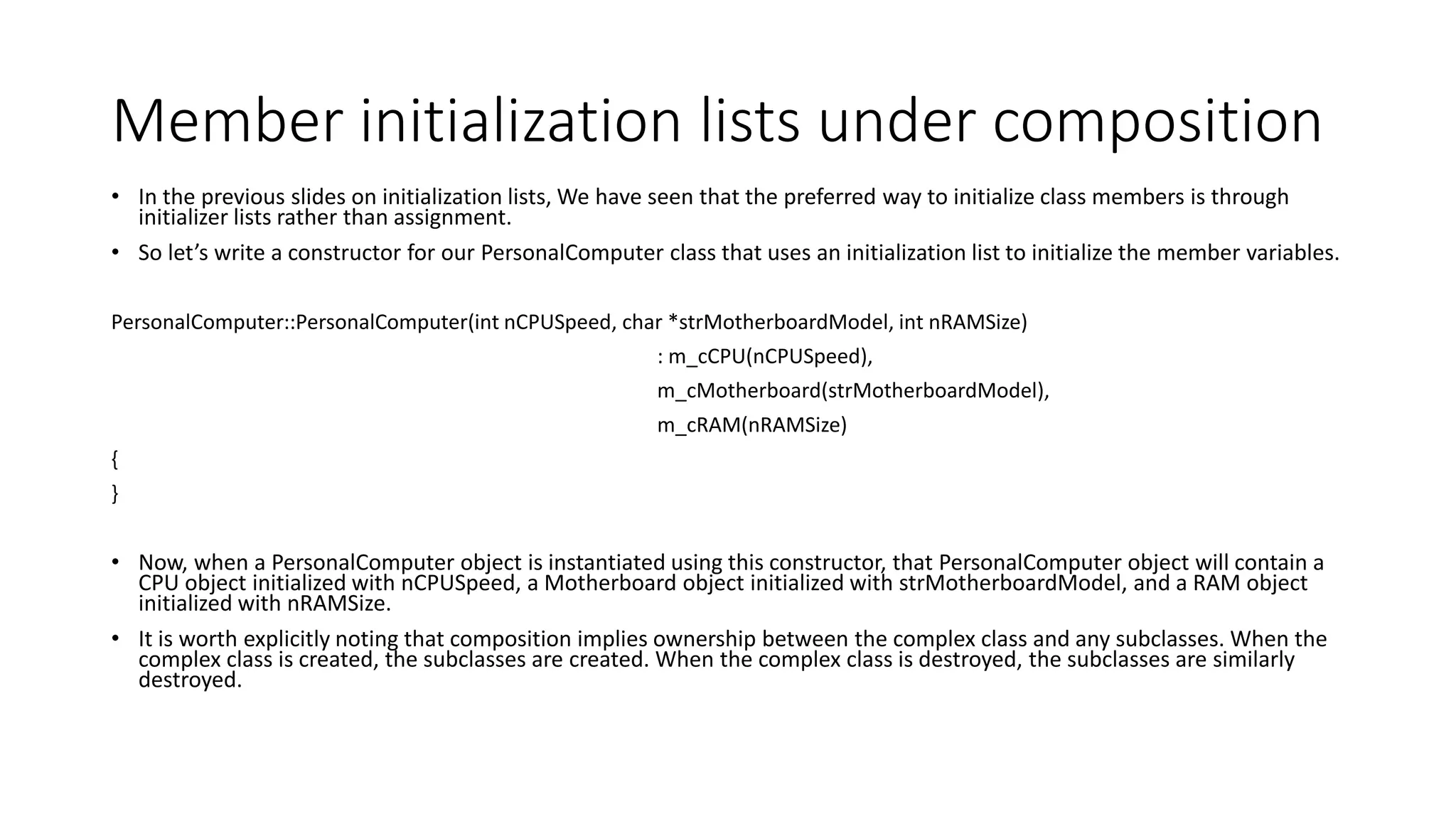

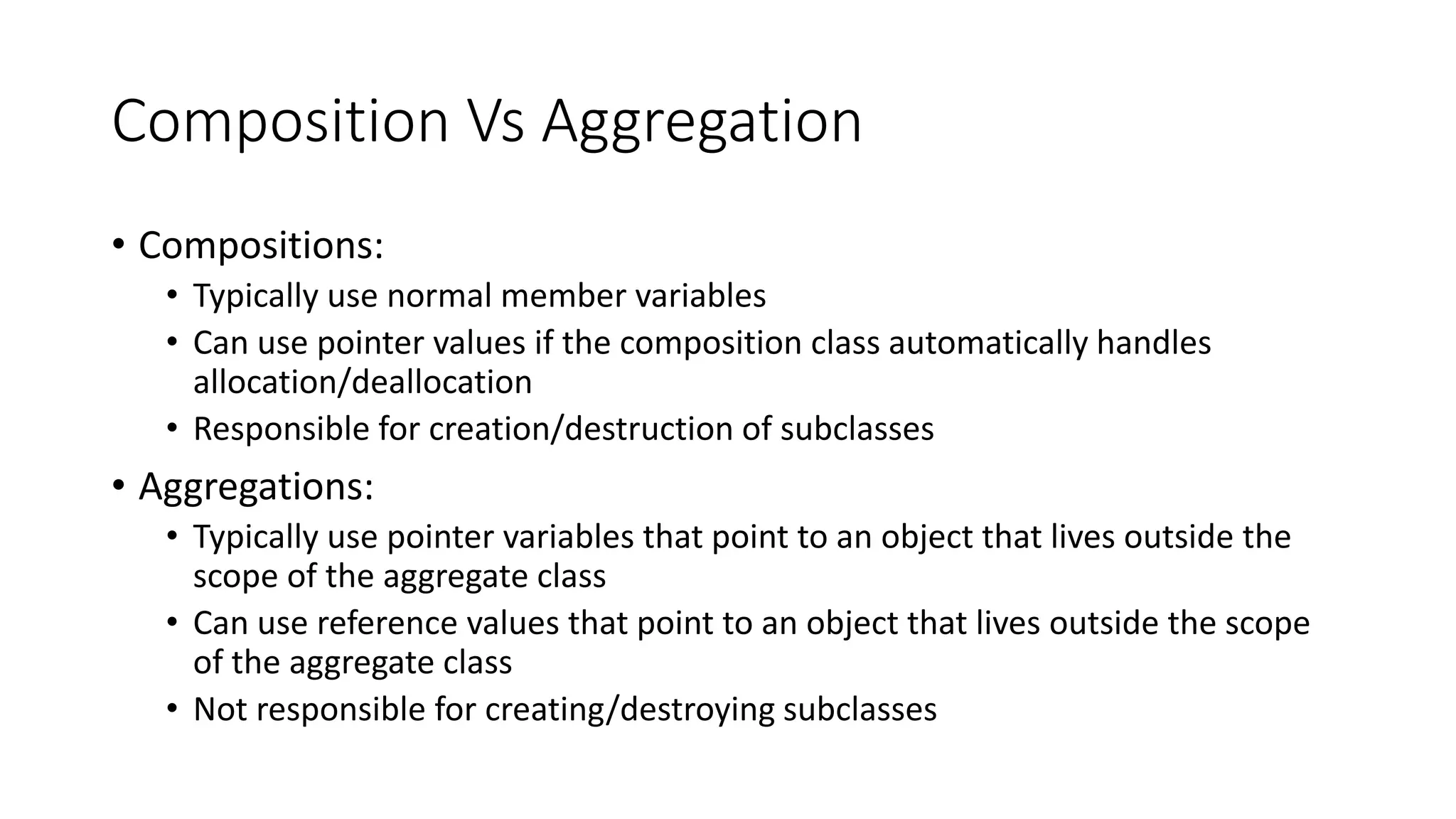
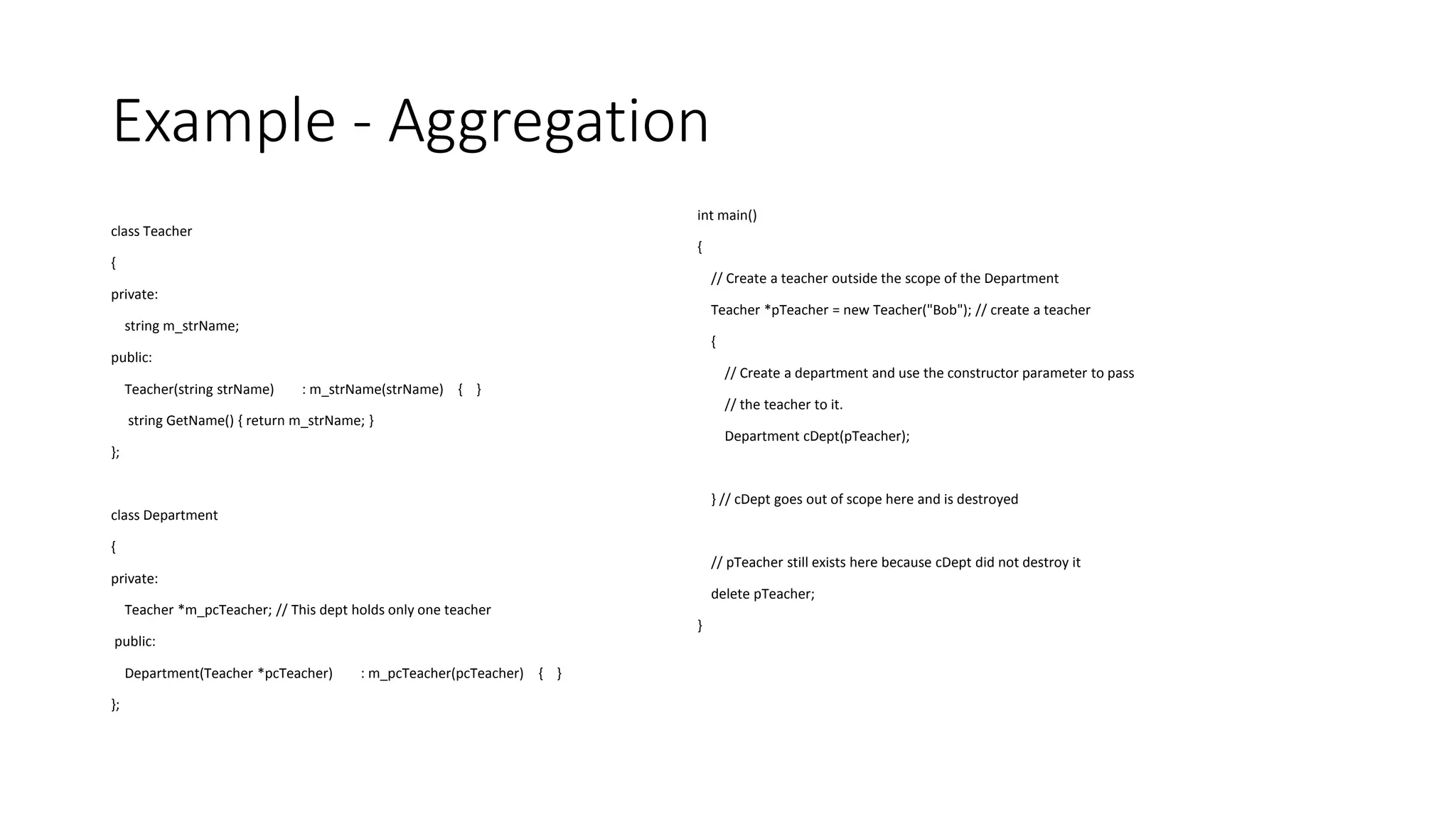
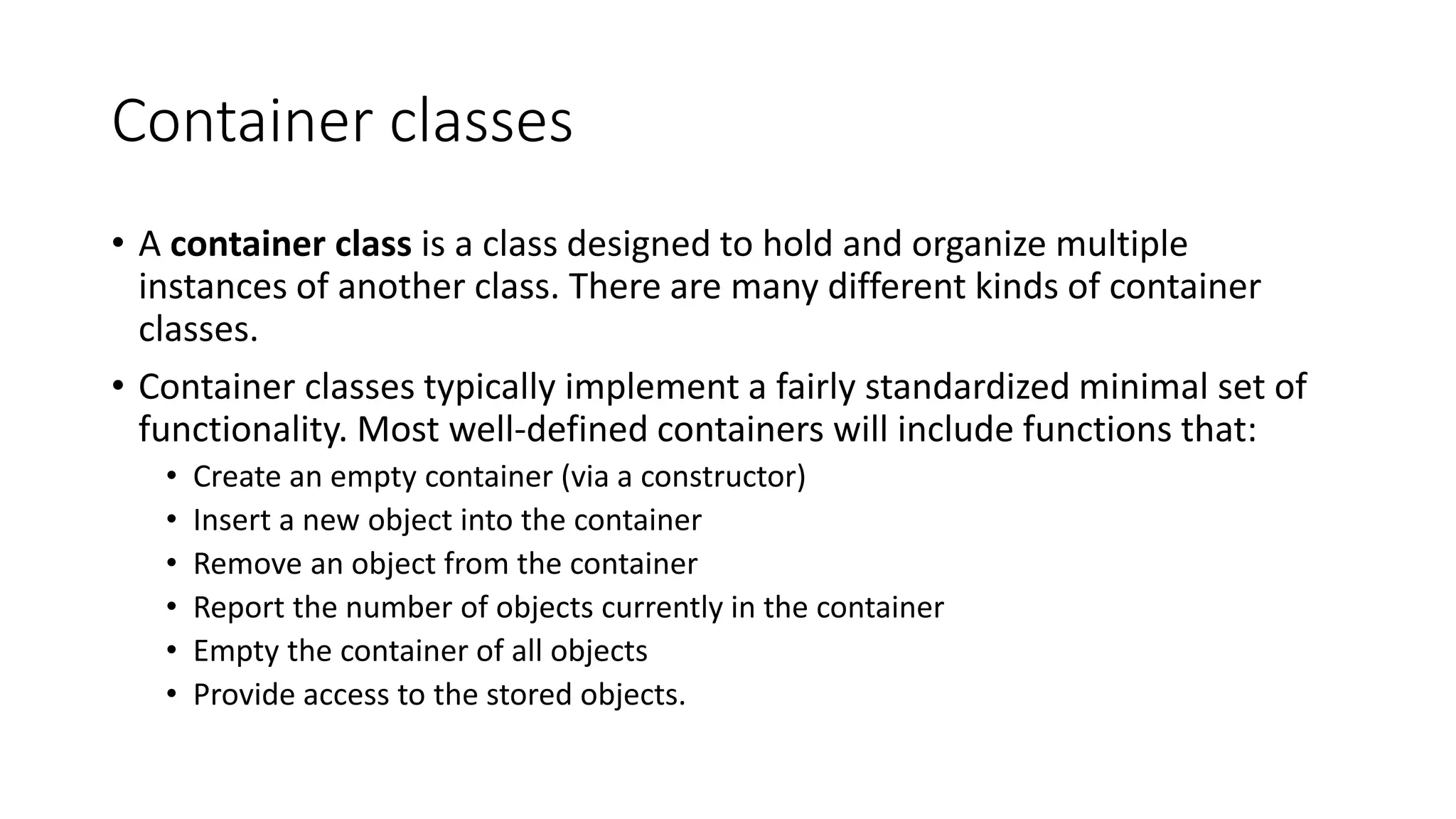
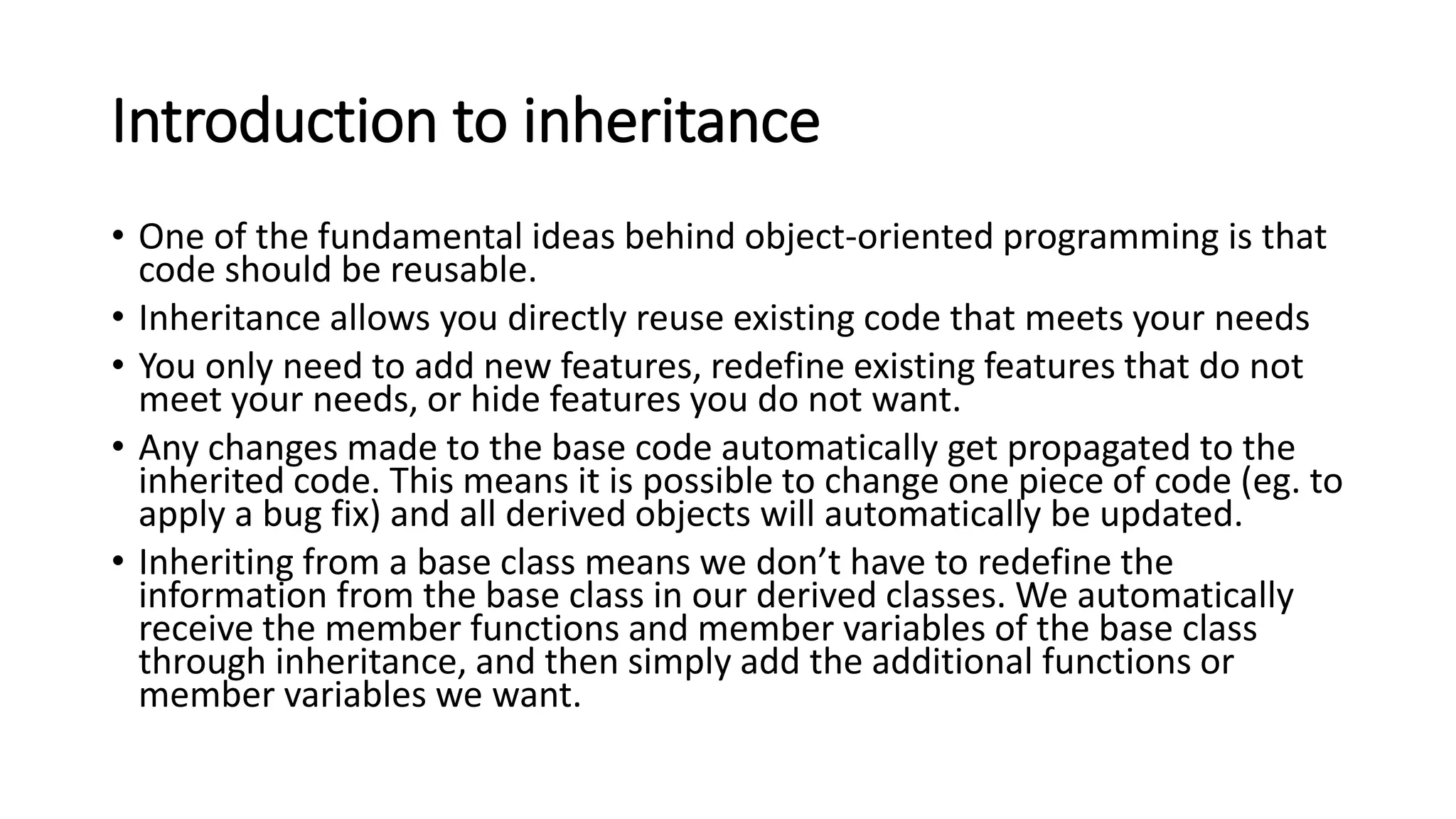
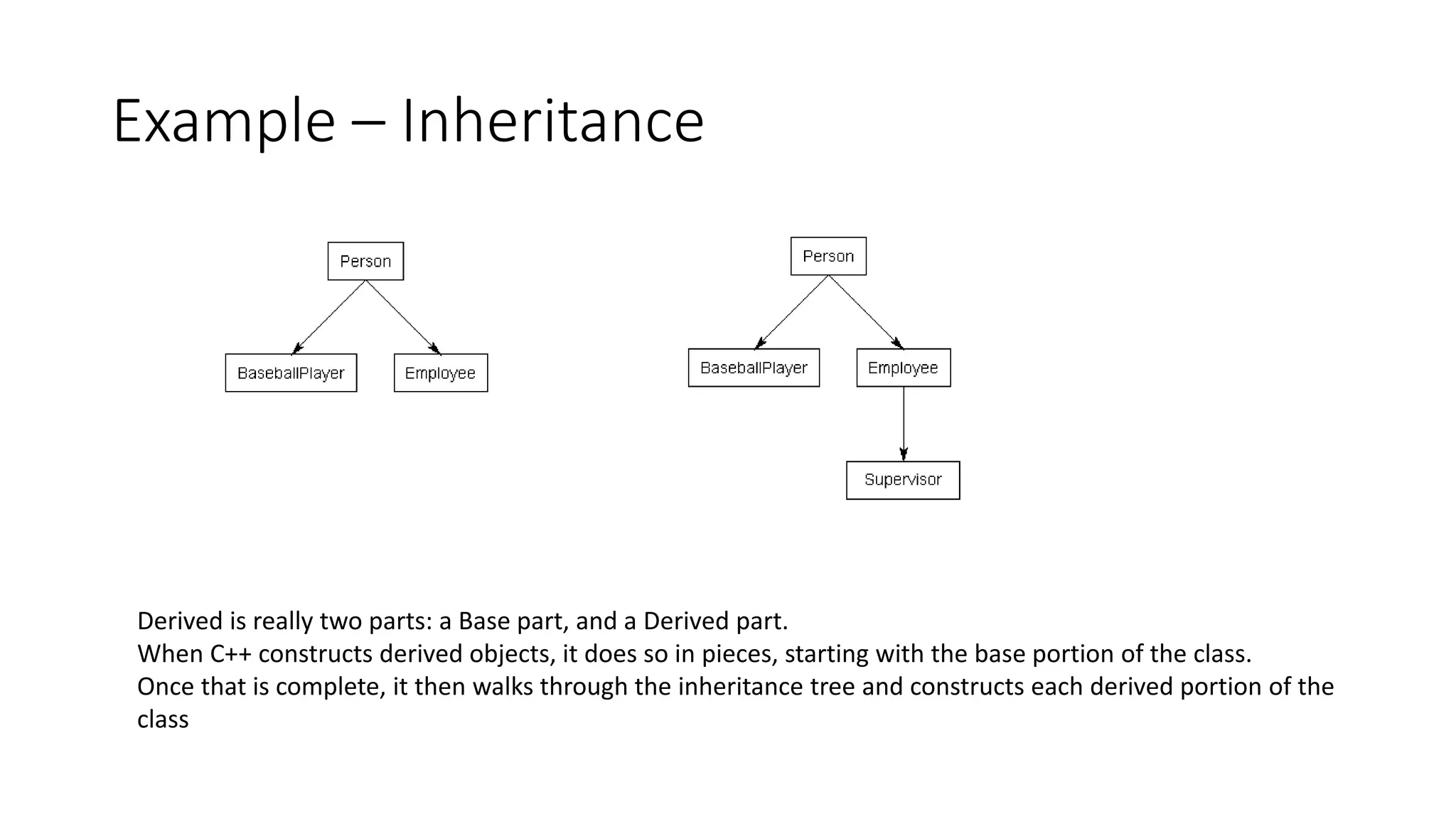
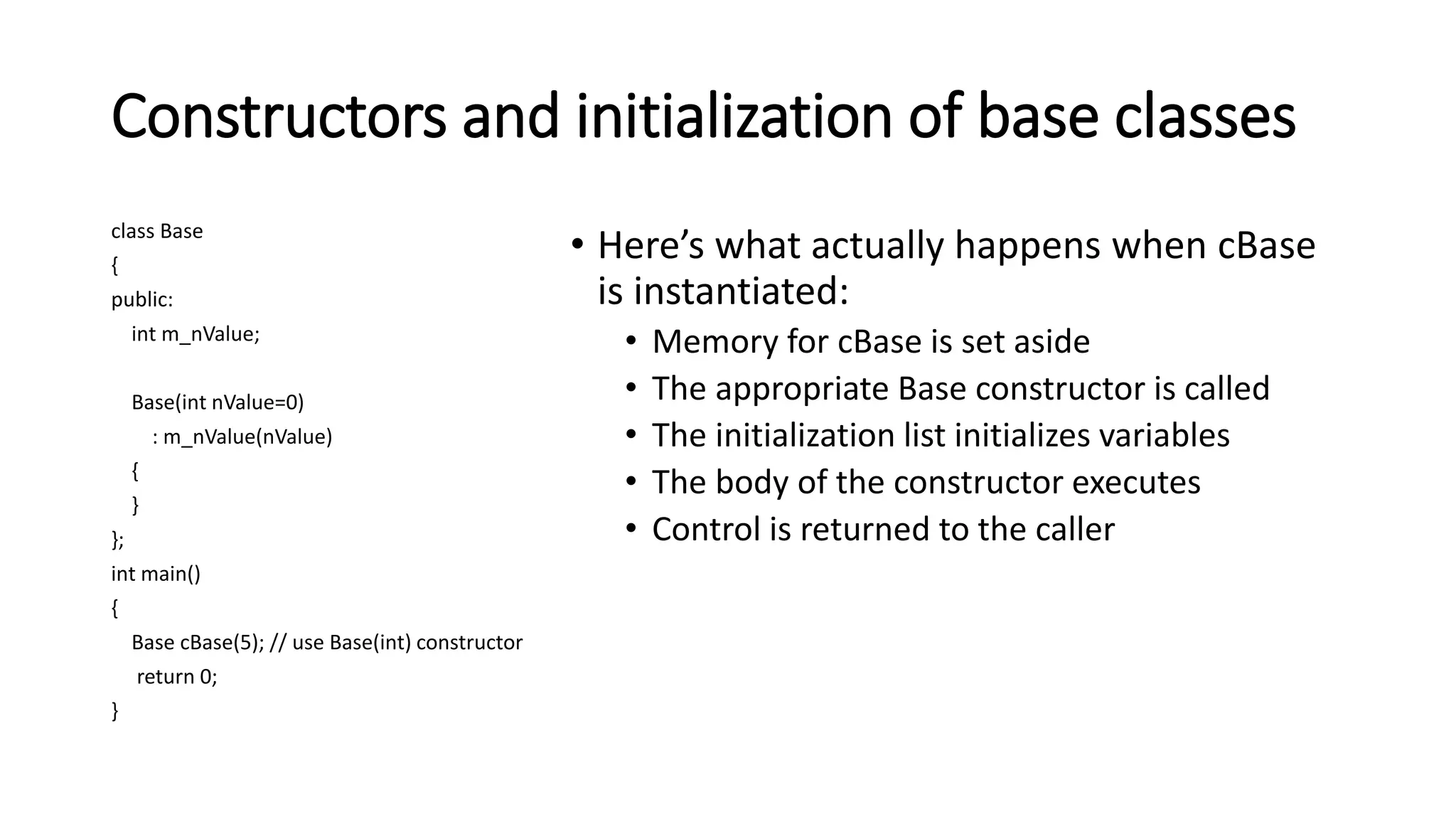
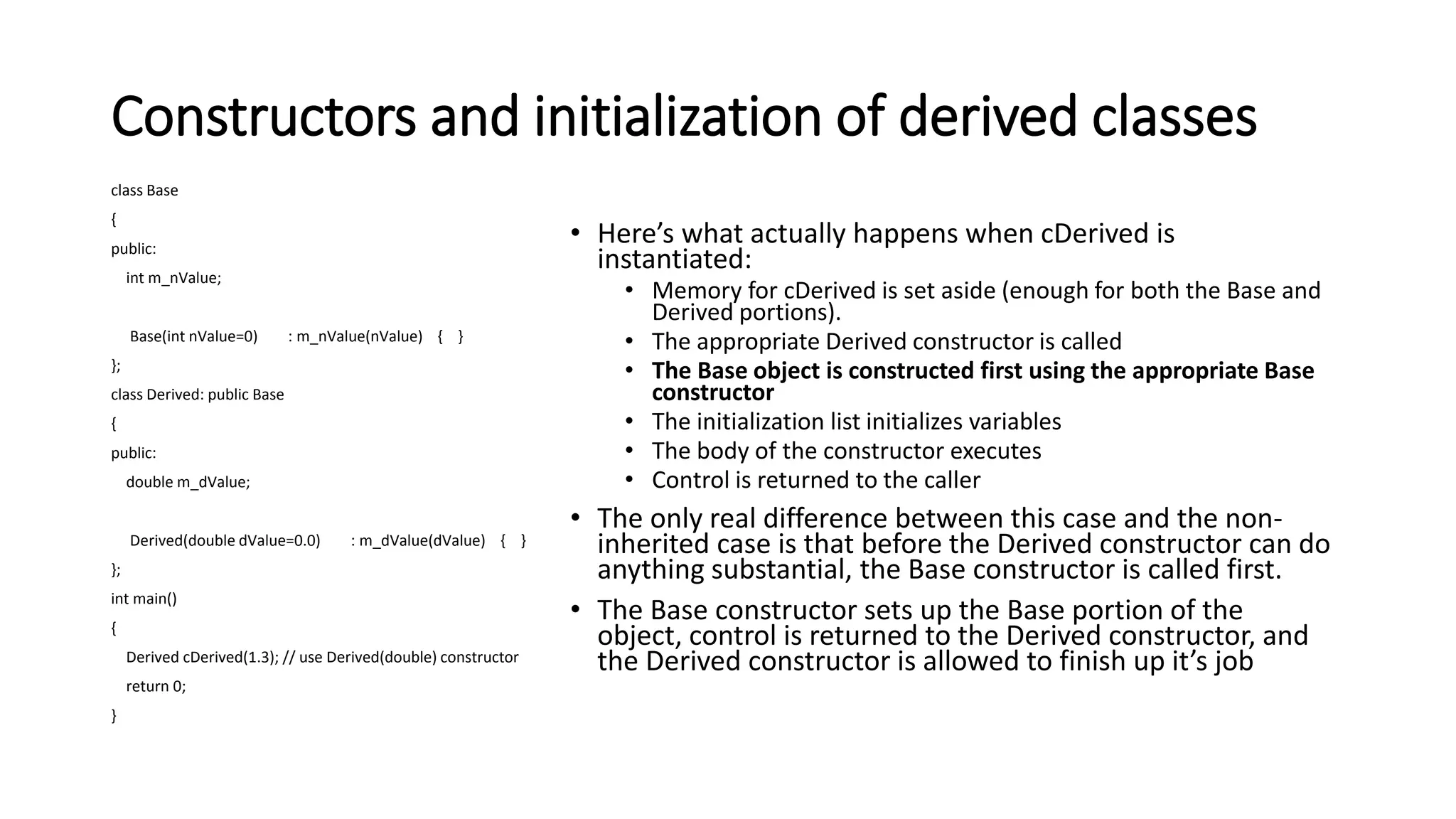
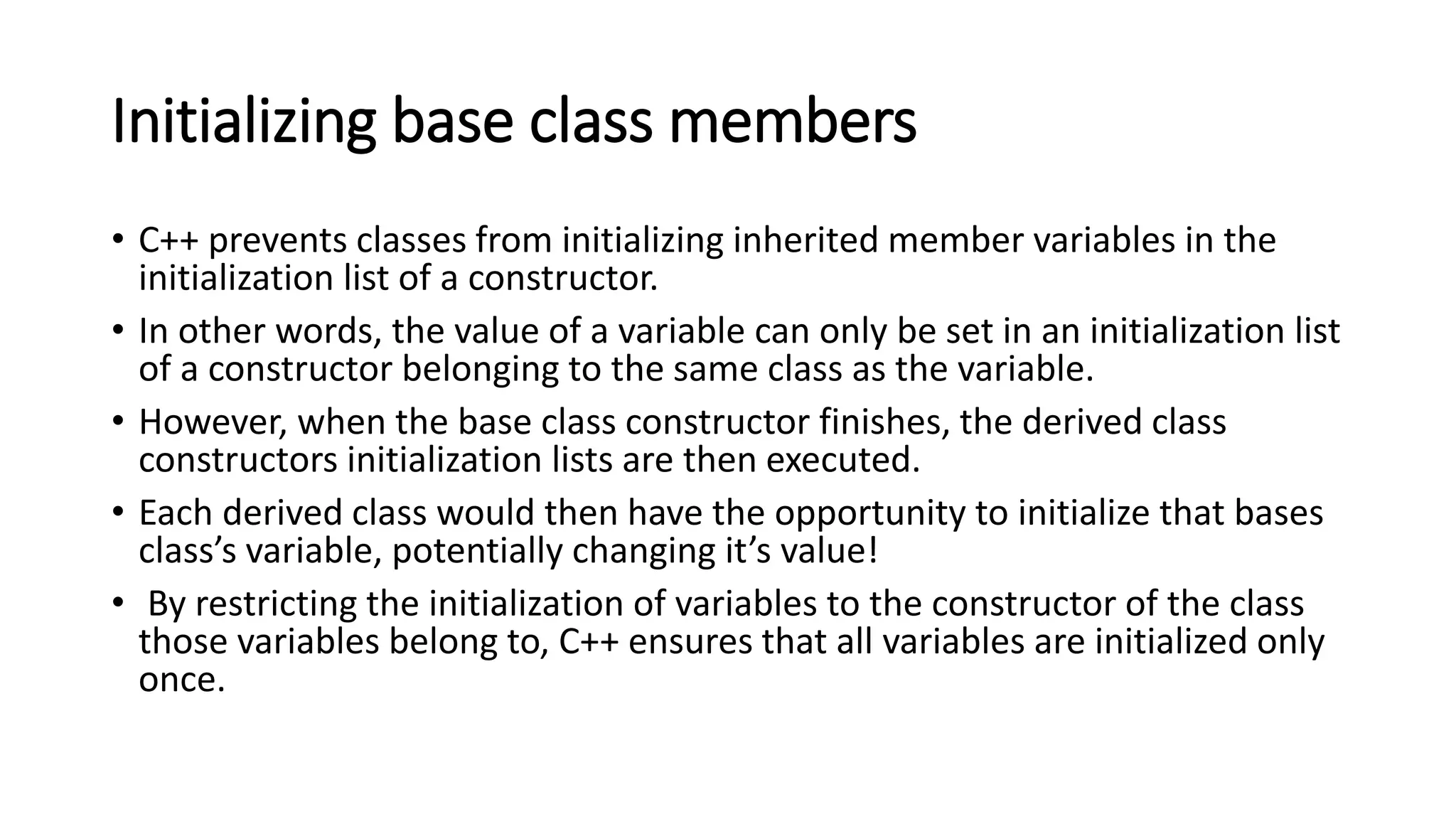
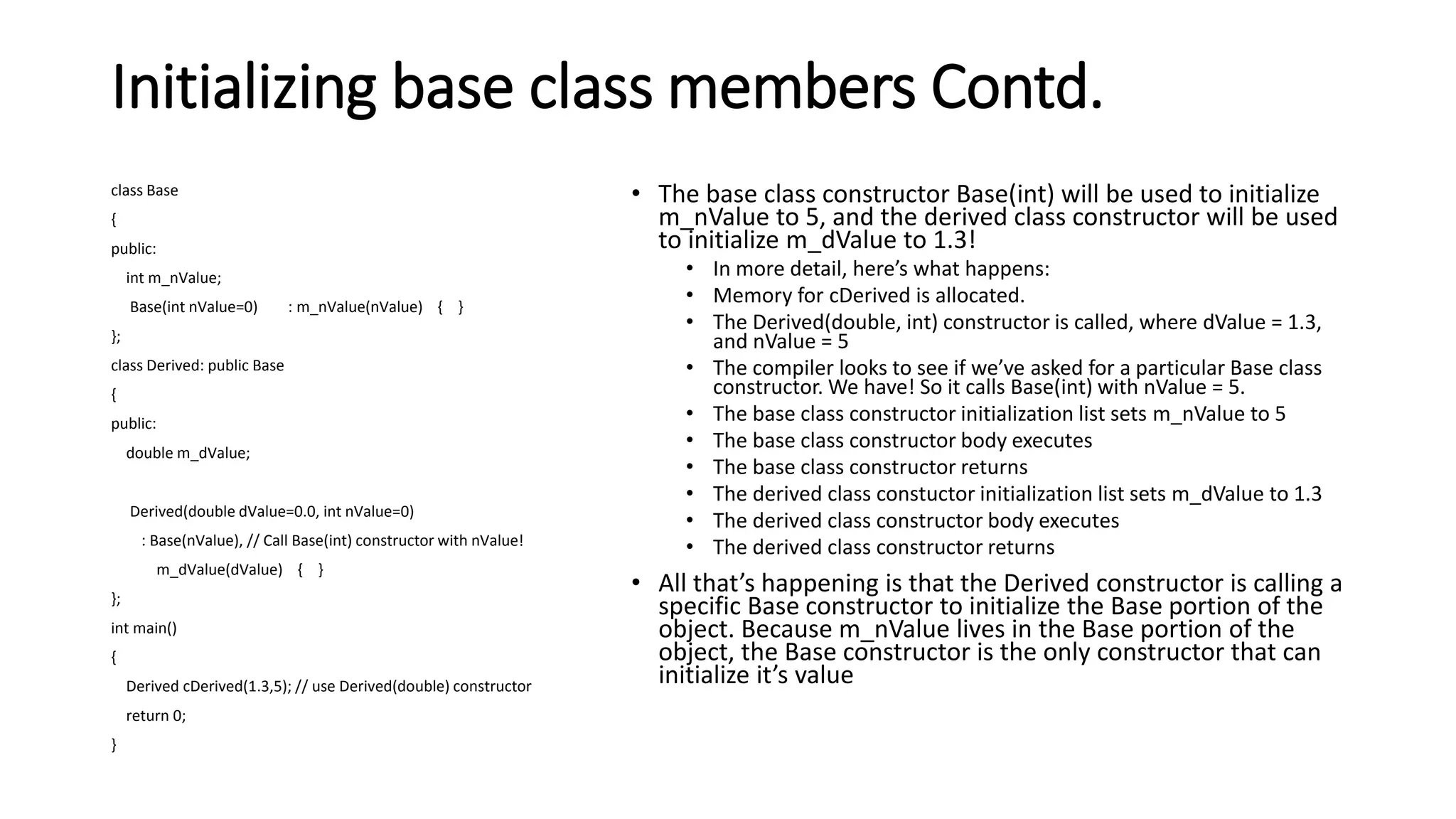

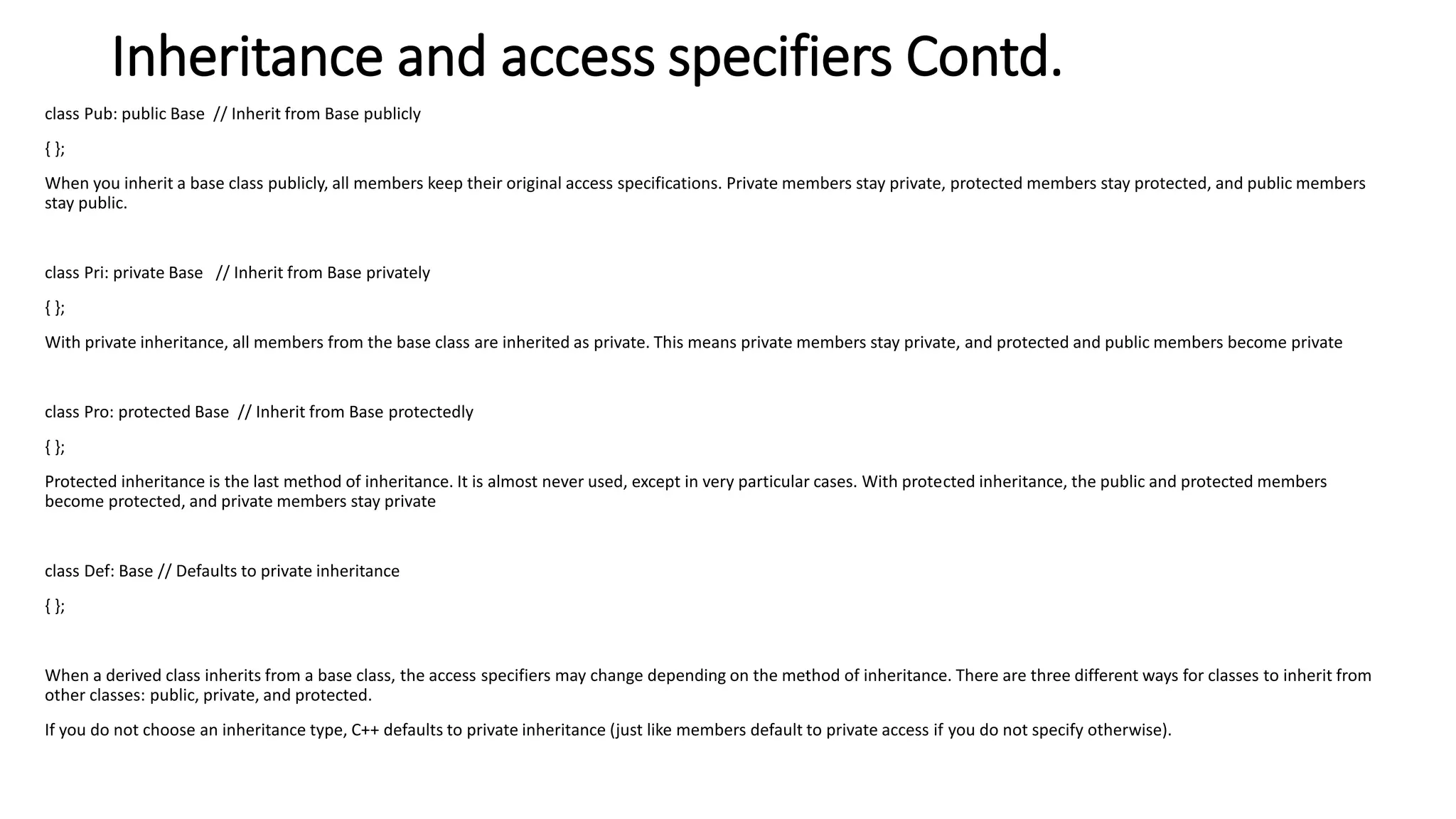


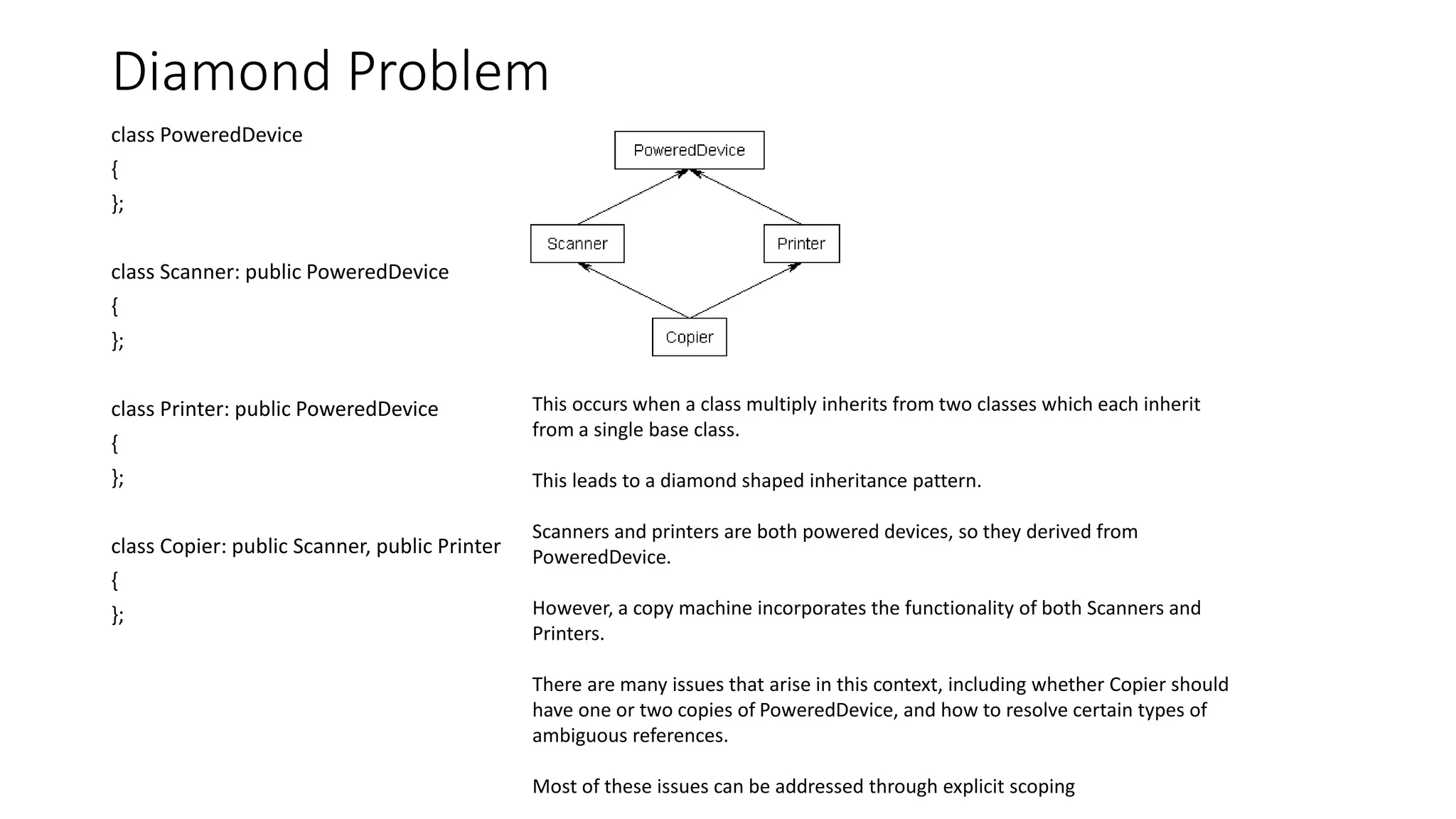
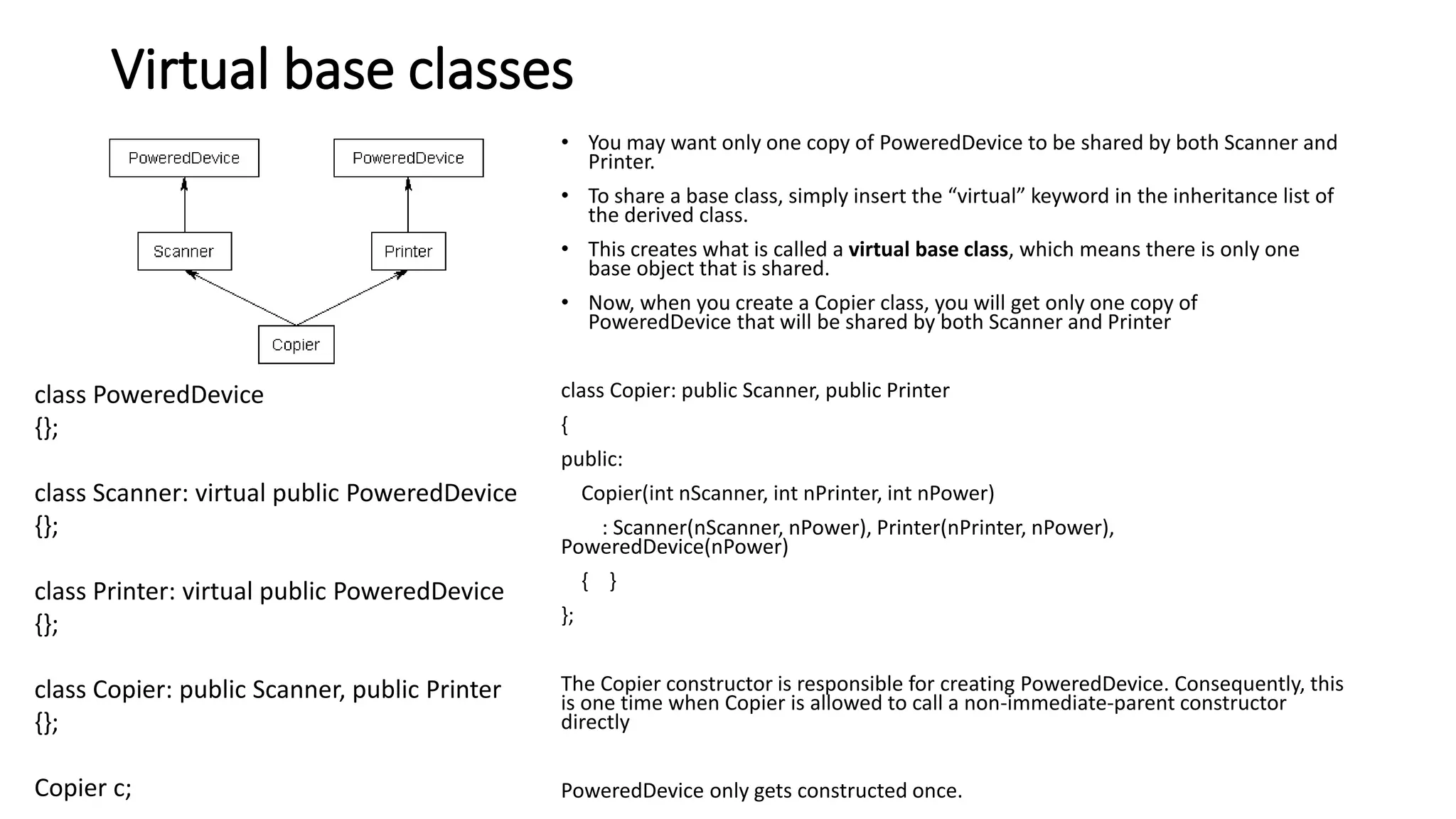

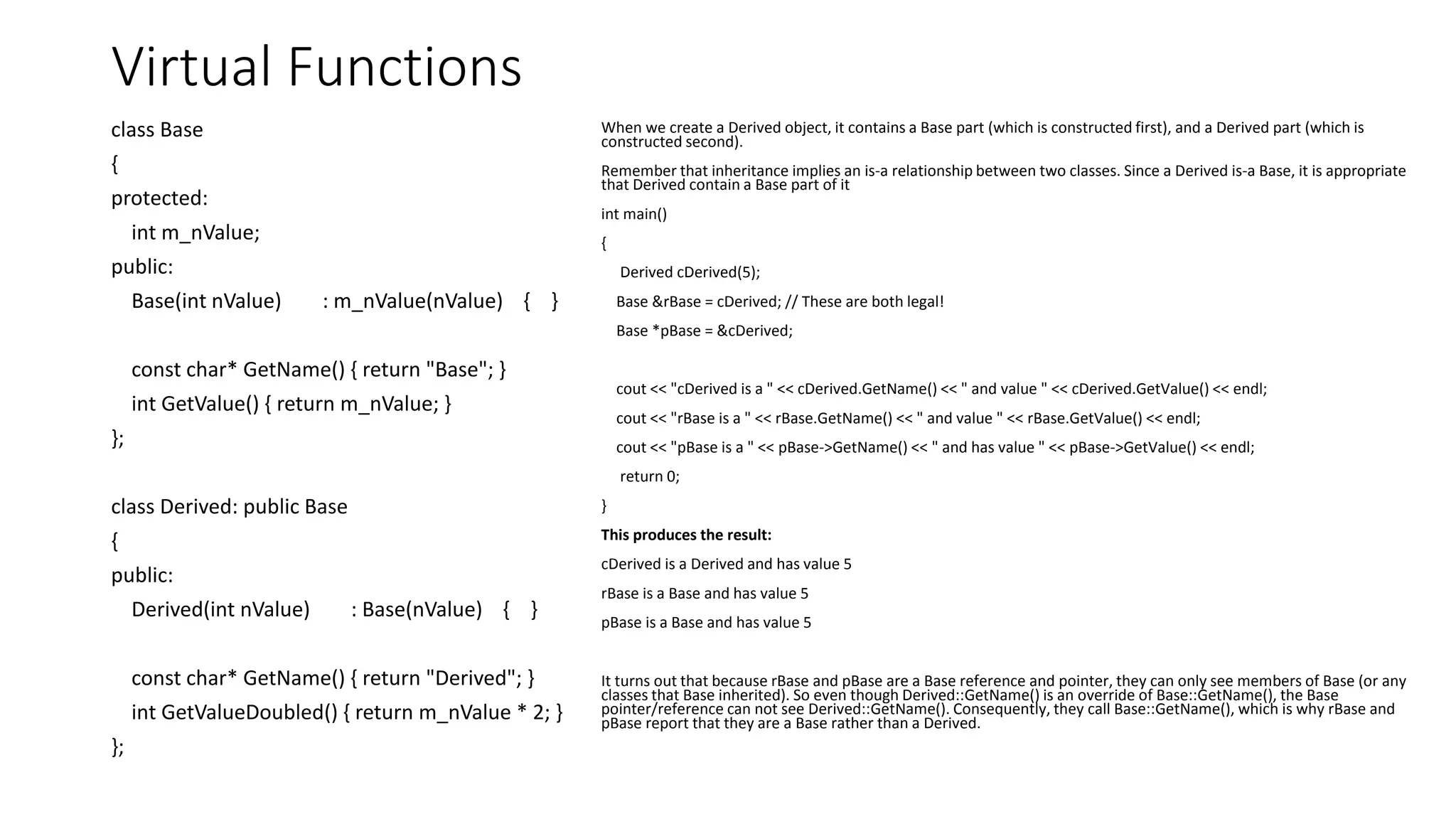
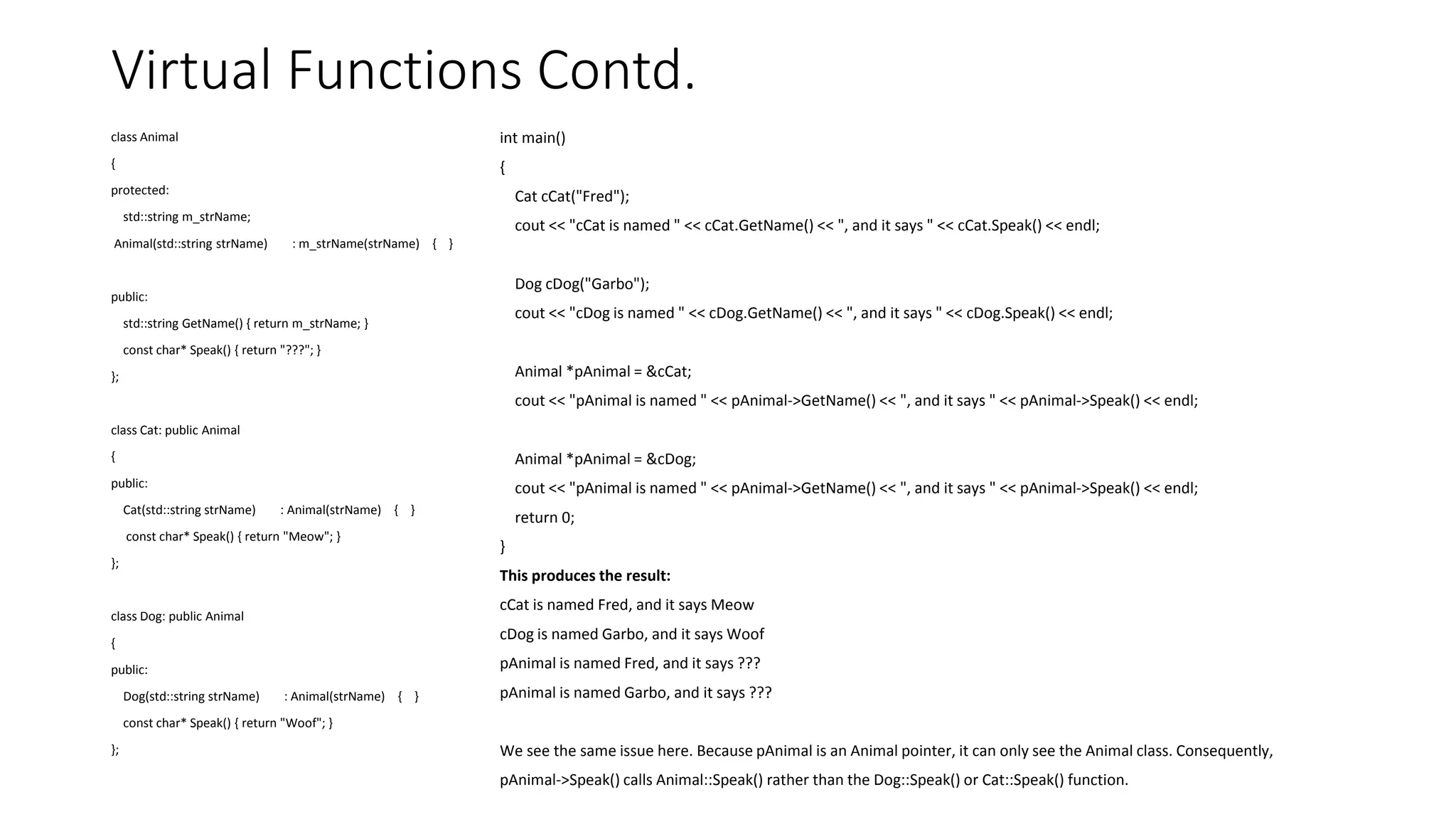

![Virtual destructors
class Base
{
public:
~Base() { cout << "Calling ~Base()" << endl; }
};
class Derived: public Base
{
private:
int* m_pnArray;
public:
Derived(int nLength) { m_pnArray = new int[nLength]; }
~Derived() // note: not virtual
{
cout << "Calling ~Derived()" << endl;
delete[] m_pnArray;
}
};
int main()
{
Derived *pDerived = new Derived(5);
Base *pBase = pDerived;
delete pBase;
return 0;
}
Output : Calling ~Base()
class Base
{
public:
virtual ~Base() { cout << "Calling ~Base()" << endl; }
};
class Derived: public Base
{
private:
int* m_pnArray;
public:
Derived(int nLength) { m_pnArray = new int[nLength]; }
virtual ~Derived()
{
cout << "Calling ~Derived()" << endl;
delete[] m_pnArray;
}
};
int main()
{
Derived *pDerived = new Derived(5);
Base *pBase = pDerived;
delete pBase;
return 0;
}
Calling ~Derived()
Calling ~Base()
Because pBase is a Base pointer, when
pBase is deleted,
the program looks to see if the Base
destructor is virtual.
It’s not, so it assumes it only needs to call
the Base destructor.
However, we really want the delete
function to call Derived’s destructor
(which will call Base’s destructor in turn).
We do this by making Base’s destructor
virtual
Resolving a virtual function call takes
longer than a resolving a regular one.
Furthermore, the compiler also has to
allocate an extra pointer for each class
object that has one or more virtual
functions](https://image.slidesharecdn.com/ctraining-150513084755-lva1-app6891/75/C-training-43-2048.jpg)
